Request a Visitor Guide Free Download Free Download

Laurel Valley Village & Sugar Plantation
Laurel Valley is the largest surviving 19th and 20th century sugar plantation and features miles of sugarcane fields, the original slave cabins, schoolhouse and church. Visit the general store and view antique tools used for harvesting sugar cane.
Learn more about the History of Laurel Valley , the facilities and buildings, what plantation life was like, and the movies that were filmed here through their 1-hour guided walking tours. Tours run daily at 10:30 AM & 2:00 PM and are available for purchase directly on their website under the 'Tour Booking' tab HERE
More Related Suggestions
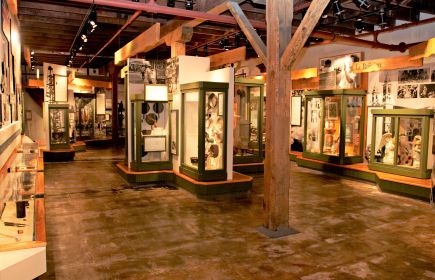
Jean Lafitte National Historical Park & Preserve Wetlands Acadian Cultural Center
Steeped in history, learn more about the cultural influence and journey of the Acadians and how they made the banks of Bayou Lafourche their home. Discover the cultural gumbo that defines Lafourche Parish and enjoy a fascinating array of exhibits, photographs, and artifacts that date back over 100 years ago. Afterwards, take a walk along the boardwalk where you may spot an alligator in the bayou.

E. D. White Historic Site
Visit this historic site and home of the first Louisiana Supreme Court Justice: E.D. White. Tour the property and hear the authentic stories of the life of E.D. White and his family. The backdrop of this historic property is set under a stunning oak tree over 300-yeard old!
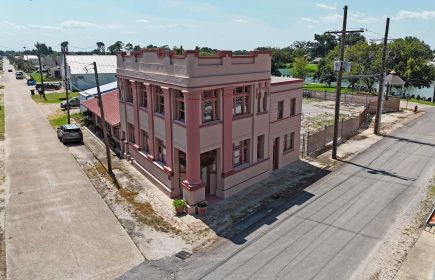
Bayou Lafourche Folklife & Heritage Museum
Step back in time and relish the history of the "Bayou Life!" Through interactive exhibits and 3D model displays, the Bayou Lafourche Folklife & Heritage Museum in Lockport is an amazing place to relive history and discover how Bayou Lafourche became home to many.
Our Photos @lacajunbayou


- Meetings & Groups
- Jefferson Parish CVB Services
- Facilities and Business Services
- Meeting Facilities & Event Venues
- Catering/Concessions
- Culture, Cuisine & Karting, Oh My!
- Family-Friendly Weekend Itinerary
- Walking Tour of Historic Gretna
- 3 Day Jefferson Experience
- Day Trip to Jean Lafitte
- MIlitary Reunion Day Trip
- Family-Friendly Day Trip
- Bachelor Party Weekend
- Bachelorette Party Weekend
- Submit an RFP
- NOLA Motorsports Park
- NOLA Gold Rugby
- Jefferson Parish Parks
- Restaurants
- Press Releases & Articles
- Story Ideas
- Travel Writers & Journalist Request Form
- Content Creator and Influencer Request Form
- Join Jefferson CVB
- Member Events
- Extranet Login
- Member Specials & Promotions
- Member Buy In Opportunities
- Hurricanes: Preparedness & Procedures in Jefferson Parish
- Things to Do
- Stay & Play in Jefferson Parish
- Arts & Culture
- Performing Arts & Theaters
- Things to do with Kids in Jefferson Parish
- Free Things to Do
- Historic Districts
- Gretna Historic District
- Kenner's Rivertown
- Westwego's Sala Avenue
- Outdoor Recreation
- Farmers and Seafood Markets in Jefferson Parish
- Shopping Centers & Malls
- Swamp & Historical Home Tours
- Special Offers
- Itineraries
- Parade Schedule
- Parade Routes
- Rhythm on the Route
- Mardi Gras Facts and History
- Family Gras
- VIP Royal Pass
- Rules & Safety
- Zurich Classic of New Orleans
- Jean Lafitte Seafood Festival
- Uncle Sam Jam
- International Tarpon Rodeo
- Gretna Heritage Festival
- Bridge City Gumbo Festival
- Seasonal Events & Fests
- Fall Festivals & Halloween
- Christmas in Lafreniere Park
- Kenner Christmas Village
- Specialty Parades
- Events & Meeting Facilities
- Tour de Jefferson
- Birdwatching
- Saltwater Fishing
- Freshwater Fishing
- Lake Fishing
- Charter Boat Fishing
- Fishing Communities
- Tarpon Rodeo
- Hiking & Nature Trails
- Barataria Preserve
- Bucktown Marsh Boardwalk
- Wetland Trace Nature Boardwalk
- Lake Pontchartrain
- National & State Parks
- Swamp & Plantation Tours
- Louisiana Oyster Trail
- Participating Restaurants
- Artists & Sculptures
- Oyster Trail Artist Application
- Creole & Cajun
- Bakeries, Coffee & Dessert
- Family-Friendly
- Seafood & Steaks
- Crawfish Facts & Recipes
- Acme's Chargrilled Oysters
- Andrea's Eggplant Crab Cake Andrea
- Bobby Hebert's Bread Pudding
- Bobby Hebert's Mardi Gras Pasta
- Cafe B's Creole Crab Dip
- Court of Two Sisters BBQ Shrimp
- Court of Two Sisters Bananas Foster
- Gattuso's Oyster Rock Soup
- Harahan's Favorite Pecan Pie
- Heritage Grill's Grilled Redfish with Crawfish & Corn Salad
- LaBella's Savory Pork Roll
- Vincent's Chicken Marsala
- Zea's Roasted Corn Grits
- Zea's Spinach Salad with Pepper Jelly Vinaigrette
- Cabins & Campgrounds
- Jefferson Parish Communities
- Bridge City/Waggaman
- Crown Point/Barataria
- Grand Isle Jefferson Parish
- Gretna Observatory
- Harahan/River Ridge
- Jean Lafitte
- Bucktown Harbor
- About Jefferson CVB
- Board Of Directors
- Jefferson Parish History
- Insider Blog
- Order A Visitor Guide
- Jefferson Parish Mobile App
- e-newsletter Signup
- Transportation
- Travel Resources
- East Jefferson General Hospital-LCMC
- Ochsner Health System
- Tulane Lakeside Hospital
- West Jefferson Medical Center
- Jefferson Parish Bicentennial

- Address: 3535 Highway 18, Vacherie, LA 70090
- Phone: (225) 265-4078
- Social:

Free Visitors Guide
Join our enewsletter.

- Privacy Policy
- Partner Login


(504)-834-1770
Save 10% When You book a swamp and plantation tour with code: 10Offcombo

New Orleans Swamp And Plantation Tour combo
Use code 10offcombo at checkout, what you'll experience, exotic wildlife.
This unique wetland is home to a fascinating array of creatures, including alligators, wild boars, raccoons, and a stunning variety of bird species such as egrets and herons. Our expert-guided tours provide an unparalleled opportunity to observe these animals in their natural habitat, offering insights into their behaviors, life cycles, and the intricate ecosystem they inhabit. Experience the thrill of encountering wildlife up close and learn about the delicate balance that sustains this vibrant environment. Whether you’re a seasoned naturalist or a curious visitor, the wildlife of Honey Island Swamp promises a captivating and educational adventure.
This unique wetland is home to a fascinating array of creatures, including alligators, wild boars, raccoons, and a stunning variety of bird species such as egrets and herons. Our expert-guided tours provide an unparalleled opportunity to observe these animals in their natural habitat, offering insights into their behaviors, life cycles, and the intricate ecosystem they inhabit. Experience the thrill of encountering wildlife up close and learn about the delicate balance that sustains this vibrant environment. Whether you're a seasoned naturalist or a curious visitor, the wildlife of Honey Island Swamp promises a captivating and educational adventure.

Breathtaking Scenery
Honey Island Swamp is a mosaic of towering cypress trees draped in Spanish moss, serene waterways reflecting the sky, and lush greenery teeming with life. As you navigate through the tranquil waters, you’ll encounter vibrant wildflowers, dense foliage, and panoramic views that change with the seasons. Experience the serene and magical atmosphere where every moment offers a new perspective on nature’s splendor. Whether you’re seeking inspiration, relaxation, or adventure, the scenic beauty of Honey Island Swamp will leave you in awe.
Honey Island Swamp is a mosaic of towering cypress trees draped in Spanish moss, serene waterways reflecting the sky, and lush greenery teeming with life. As you navigate through the tranquil waters, you'll encounter vibrant wildflowers, dense foliage, and panoramic views that change with the seasons. Experience the serene and magical atmosphere where every moment offers a new perspective on nature's splendor. Whether you're seeking inspiration, relaxation, or adventure, the scenic beauty of Honey Island Swamp will leave you in awe.

Oak Alley Plantation
Just up the river from Laura is the “Grande Dame” of the Louisiana River Road plantations, Oak Alley plantation gets its name from the spectacular quarter mile tunnel of 28 oak trees that frame the driveway as you approach. Built in 1839 and facing the Mississippi River, the magnificent entrance to Oak Alley Plantation makes it a “Must See” destination on everyone’s list of historic Louisiana sites.
Whitney Plantation
The Whitney Plantation stands out by honoring the slaves who built it. Visitors can tour “The Big House,” Slave Quarters, Wall of Honor memorial, Antioch Baptist Church, and other exhibits. Established in the early 1700s by a German immigrant, the plantation thrived due to slave labor, producing over 400,000 pounds of sugar at its peak. Today, it serves as a memorial to the enslaved individuals who sacrificed their lives.
Learn more about Whitney Plantation

HEAR FROM OUR CUSTOMERS
I would definitely recommend Cajun Encounters!! The booking process was super easy. We were picked up on Canal St. by our bus driver Derek. He was very sweet, funny and I love how he talked about some of the history in New Orleans. (Especially being a first timer.) Capt. Jacob did an amazing job with our swamp tour. He was very knowledgeable and experienced at what he does. I would do it all over again!
Captain Randy was absolutely fantastic! Despite getting caught in the rain, we had the time of our lives laughing hysterically throughout the entire ride. It added such a fun and unexpected element to our experience. Even though we didn't have the covered boat, we wouldn't have had it any other way - we truly had a blast. Justina, our bus driver, was so upbeat and provided a tour filled with interesting facts and information...
Absolutely loved this tour. Scott the Swamp Manager was outstanding. His boat handling skills were excellent and his commentary and knowledge of the area was exceptional. It would have meant nothing without the commentary. The health and safety considerations were a very high standard but we all had fun. He was considerate to other boats in the area and gave us very full information about the whole area.
Loved my experience! Captain Jacob was so informative and passionate about the swamp and all the beauty it held! I went for my birthday hoping to see Alligators and truly enjoy the scenery and sure enough that’s exactly what we did! We even went to the exact Bayou that was photographed to create my favorite movie (The Princess & The Frog). Even the car ride to the swamp that we coordinated with Cajun Encounters...
Absolutely amazing tour!! From start to finish, the whole experience was smooth and comfortable. Our driver Brian was full of great facts about New Orleans, and made the pick up and drop off very easy and enjoyable. Our captain Scott was incredible, so informative about the local fauna and flora. It felt like he went above and beyond to get the whole boat the best experience we could!
Capt. Steve was a phenomenal tour guide. He made a unique experience superb with his friendly nature and informative facts. He truly loves this area and respects the wildlife within it. We had an amazing time with Cajun Encounters on the swamp tour. If you’re in the area or visiting New Orleans, don’t miss it! A bus will pick you up from your hotel; our driver, Ty the Extraordinaire, shared wonderful local history...

Why book with us?
Your safety is our top priority at Cajun Encounters. We adhere to the highest safety standards and regulations, ensuring that every tour is conducted with your well-being in mind.
Flexibility
We offer multiple pickup locations around New Orleans, including the most popular spots and hotels. This ensures that starting your journey is as easy and hassle-free as possible.
Transportation details
- You may opt to drive to the swamp tour, or select the option that includes round-trip transportation. Our drivers only pick-up from the locations listed here . Requests for other locations cannot be accommodated.
- Please note that self transportation is not an option for our plantation tours.
- Free parking is available for swamp tours for those providing their own transportation.
- Cajun Encounters boats return to the original departure point, 55345 US-90, Slidell, LA 70461. Visit our maps & directions page for more details.
- If hotel pick-up was included, a Cajun Encounter coach will return guests to their original departure point.

image gallery

504.834.1770
All Available Tours
Darrow, louisiana.
Browse options here and book in advance to secure your space getting a chance to tour the estate!
Choose Your Tour!
- Most Popular Tour!
- User All Ages
- Hour Glass 1 Hour
Houmas House Mansion and Gardens Tour
Guided mansion tours are offered daily and offer a glimpse of plantation life.
- Lush 38-Acre Gardens!
- User Ages 6+
- Hour Glass 8 Hours
Self-Guided Garden Tour
A self-paced outdoor experience to enjoy our beautiful gardens!
- Combo Tour!
- Hour Glass 6 Hours
Houmas House & The Great River Road Museum Combo Ticket
After a guided mansion tour leads guests through the architectural evolution of the mansion and details how a succession of owners and the Mississippi River grew this manor house to today’s grand estate, visit an expansive museum that educates about life on the Mississippi– exploring the culture, commerce, folklore.
- New Attraction!
Great River Road Museum and Gardens Tour
Get a glimpse into the history and life along the Mighty Mississippi River between Baton Rouge and New Orleans. Explore river life on the east and west banks of the Lower Mississippi.
- 2-for-1 Plantation Tour!
Houmas House & Destrehan Plantation Combo Tour
Discover two of the oldest stately homes that offer a glimpse into plantation life in the 1800’s. Each plantation offers a guided tour!
Houmas House Plantation offers several options for tours. The guided mansion tour is 60 minutes and offered daily from 9:30 am – 7:00 pm providing visitors the chance to understand daily life on this Sugarcane Plantation. Using artifacts, antique furniture and original artwork, a guide in period dress leads guests from room to room telling stories of past owners and their legacy, the mansion’s architectural evolution, and how the Mississippi River helped grow this modest manor house into the grand estate it is today.
The mansion is completely handicap accessible and each room provides several places to sit throughout the guided tour. If staying in New Orleans and seeking transportation, we suggest renting a car and visiting multiple plantations while seeing Houmas House. Itineraries with easy driving directions are available.
Getting Here
Uber and Taxis are not reliable to and from New Orleans or Baton Rouge.

- Destinations
Travel Videos
- Statewide Attractions
- Attractions
- Things To Do
- Festivals & Events
- Browse Brochures
- Shopping Cart
Travel Guides
Other Destinations and Travel Brochures you may be interested in that are nearby your selection:

St. Joseph Plantation
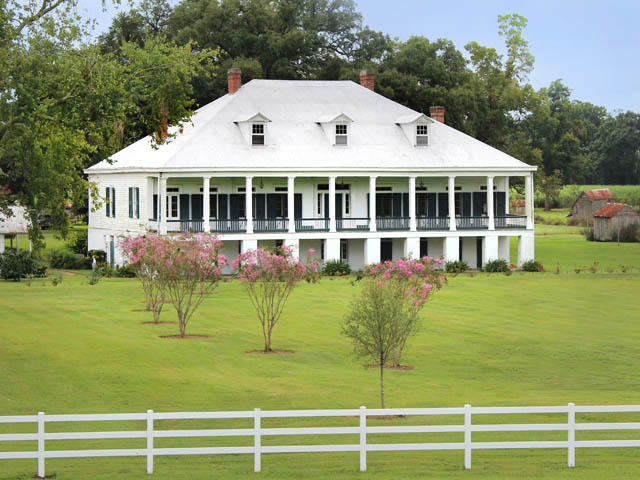
St. Joseph Plantation is a family owned, working sugarcane plantation.
Built circa 1830, St. Joseph has been family owned since 1877 when purchased by Joseph Waguespack. 135 years later, St. Joe continues to operate as a working sugar cane planation. When touring, you may be pleasantly surprised to learn that your tour guide is a direct descendant of Joseph Waguespack. Learn about the history of those who lived and worked on the plantation.
The plantation’s most famous son is Henry Hobson Richardson, one of the nation’s premier architects of the 19th century. He was born at St. Joseph Plantation in 1838. Richardson is renowned for designing the original Marshall Field store in Chicago and the Trinity Church of Boston, referred to by modern architects as being built in the “Richardsonian Romanesque” style.
St. Joseph is also the premier spot for Film and TV production. Several hits like the Own Network’s, Queen Sugar, and the Oscar Nominated Netflix movie, Mudbound, have been filmed on the property.
Nestled between our neighbors, Laura Plantation and Oak Alley Plantation, we are Located on Hwy. 18 (the River Road) in Vacherie, LA.
Video Modal
Travel Destinations
St. Joseph Plantation Slideshow
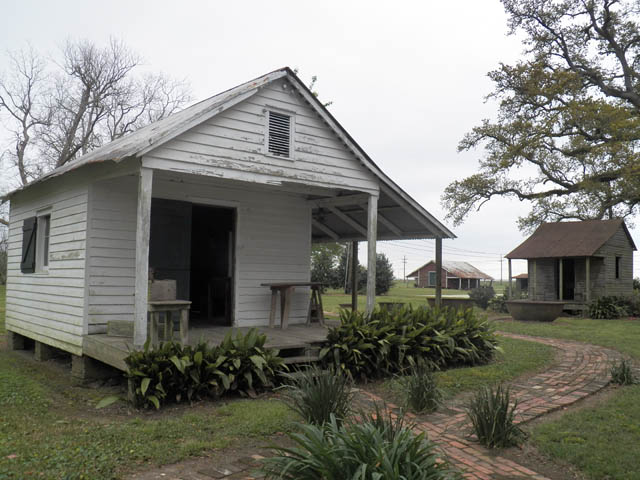
View St. Joseph Plantation Slideshow

Plantation Tours
- Area Information
Experience History
Plantation Tours near New Orleans
Step back in time and experience the rich tapestry of Louisiana’s past with New Orleans plantation tours. These historic sites, each with their own unique stories and significance, offer a glimpse into the South’s antebellum era, revealing its grandeur, challenges, and undeniable impact on American history.
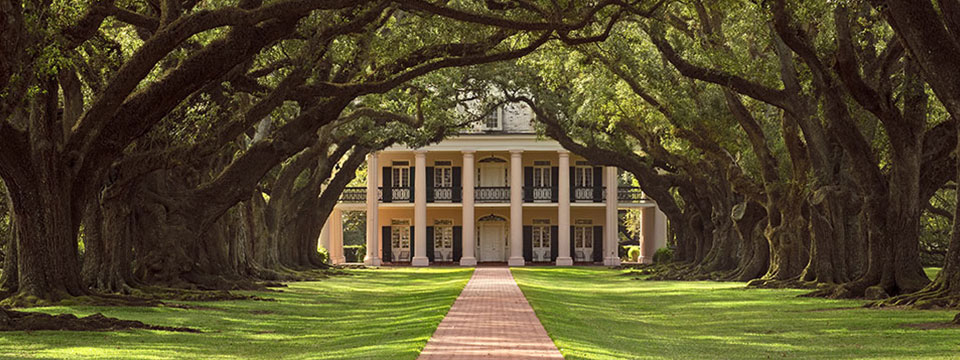
Oak Alley Plantation
A visit to Oak Alley plantation is a immersive journey into antebellum South. This iconic estate shares its evolution overtime, from a mere land grant on a map to its time as a working sugarcane plantation and to the creation of the nonprofit that owns and operates site. Visitors are invited to explore all facets of this National Historic Landmark through interpretive exhibits including the Slavery at Oak Alley, the “Big House”, the East & West Gardens, and various other exhibits and points of interest.
Other Planation Tours near New Orleans
Laura Plantation
Houmas House Plantation
St. Joseph Plantation
Nottoway Plantation
Destrehan Plantation
Whitney Plantation
Start typing and press enter to search

Savvy Travel Advice
Oak Alley Plantation: Our Visit and Overnight Stay at a Louisiana Plantation
Last updated: October 22, 2021 - Written by Jessica Norah 33 Comments
Oak Alley Plantation is one of over a dozen Louisiana plantation homes open to the public that line the Mississippi River between Baton Rouge and New Orleans. In the mid-nineteenth century, over 300 plantations lined the river in this area, most of the plantations growing sugar cane which became the principal cash crop in this area by the early nineteenth century.
Oak Alley Plantation is often considered the Grande Dame of the Great River Road with a lovely Greek Revival style main house and a number of dependencies built between 1837 to 1839. Oak Alley is no longer a working sugar cane plantation, but the original main house and a few other original buildings remain on the property as well as the famous 300-year-old alley of oaks that gives this plantation its name and photogenic fame. It is also famous for being shown in numerous TV shows and films, including Hush Hush Sweet Charlott e and Interview with the Vampire .
Unknown to many visitors, travelers can not only have a meal at the Oak Alley Restaurant but they can also stay overnight in one of several historic or modern cottages located on the plantation grounds. Laurence and I were fortunate enough to be overnight guests in one of the Oak Alley Plantation cottages which gave us ample time to explore the grounds, sample the food, and get great views of the plantation at sunset and sunrise.
We’ll share all the information you’ll need to visit and tour the Oak Alley Plantation and also details for those wanting to stay overnight at this famous plantation.
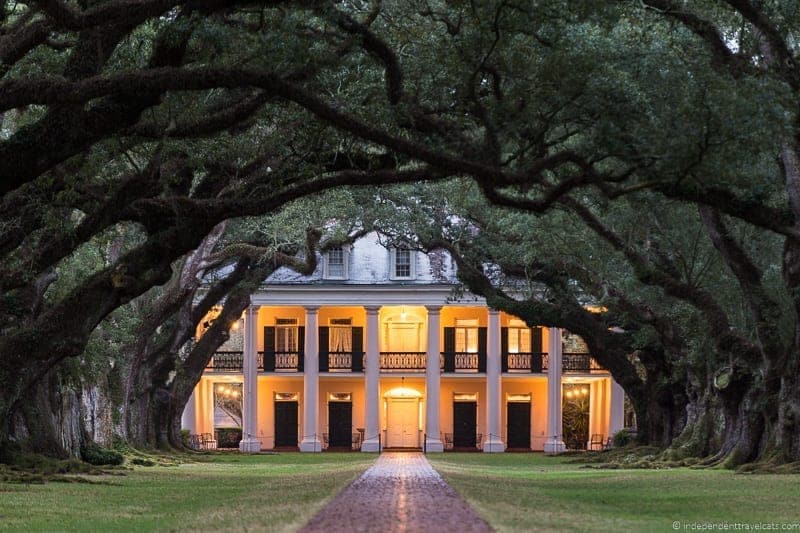
Table of Contents:
Basic Information for Visiting Oak Alley Plantation
Here is some information and tips to help you plan your visit to Oak Alley.
What is the address of Oak Alley?
The address is 3645 Highway 18, Vacherie, Louisiana 70090
How do I get to Oak Alley?
Oak Alley Plantation is most accessible for drivers by car. It is located about 53 miles (1 hour driving) from both Baton Rouge and New Orleans. The plantation website provides very detailed directions and maps to Oak Alley Plantation for drivers.
Another good way to visit is to join a plantation tour from New Orleans or Baton Rouge that includes Oak Alley Plantation or hire a private car transfer. See next section for a list of tour options.
Note that there are taxis and Ubers; however, many people who have used Uber have been stranded at plantations because there are few drivers who will do pick-ups from this area. So you are better off arranging a day trip, private transfer, or scheduled taxi (with pick-up and drop-off arranged in advance).
Unfortunately, there are no good public transportation connections to Oak Alley Plantation.
Oak Alley Day Tour Options from New Orleans?
Day tours are a very popular way to visit Oak Alley Plantation from New Orleans, both group and private tours are available. Many tours also include visits to a second plantation.
Here are several possibilities:
- If you only want to visit Oak Alley, there is this group tour from New Orleans, this group tour from New Orleans, and this private tour .
- This guided tour visits both Oak Alley as well as Laura Plantation.
- This half day tour takes visitors along the River Road and then allows them to choose to visit one fo the following plantations: Oak Alley, Laura Plantation or Whitney Plantation.
- This private tour includes hotel pick-up and visits to Oak Alley and Laura Plantation for the West Bank option.
How did I book Tickets to Oak Alley?
Tickets can be purchased at the Ticket Center on arrival to the plantation at the Ticket Booth located near the parking area. Tickets can not be purchased in advance. Tour reservations are required for groups of 20 or more.
How much are entrance tickets to Oak Alley?
As of June 2021, tickets are USD $25.00 for adults age 19+, $10.00 for children age 13 to 18, and $7.00 for children age 6 to 12. Those age 5 and under are given free admission.
Discounts are available for seniors, AAA members, military, students, and first responders.
Oak Alley Ticket Inclusions?
The Oak Alley Plantation ticket includes a guided tour of the mansion (the “Big House” tour) and access to all the exhibits, demonstrations, and other public buildings at the plantation.
On your own you can visit the grounds, the Alley of Oaks, the Slavery at Oak Alley exhibit with reconstructed slave quarters, the Civil War Interpretive Exhibit, the blacksmith shop, watch a sugarcane video, and see a few other sites of interest.
How long should I spend at Oak Alley?
The mansion tour is about 35 minutes long and is given every half hour. You should allow at least two hours to do the mansion tour, stroll the grounds, visit the gift shop, and see some of the other exhibits.
If you want to eat a meal here, I would definitely allow a bit more time. Similarly, if this is the only plantation you plan to tour in the area, I would spend the afternoon here and enjoy the experience by strolling the grounds, stopping at all the exhibits, having a meal, and enjoying a mint julep.
Where is the Alley of Oaks at Oak Alley?
There is actually an alley of oaks at the back and front of the mansion. The famous Alley of Oaks is a 800-feet-long alley of 300-year-old mature Virginia Live Oaks located on what would have been the front of the house. An alley of younger oaks in the back alley were planted in the 1830’s and 1930’s. Visitors can stroll along the oak alleys on their own before or after the tour.
Only those with tickets are permitted on the grounds of the plantation.
Food at Oak Alley?
There is both a sit-down restaurant and a cafe centrally located on the plantation. There is also a Spirits Bar that is often open located across from the restaurant.
The Oak Alley Restaurant is open for breakfast and lunch from 8:30 am to 3:00 pm (9:00 – 15:00). Seating is on a first come, first served basis. The Plantation Café offers sandwiches, wraps, snacks, ice cream, coffee, drinks, and even mint juleps from 9:00 am to 5:00 pm (9:00 – 17:00).
Large groups should contact Oak Alley in advance for planned seating.
Overnight Accommodation at Oak Alley?
Visitors have the option to stay overnight at the plantation. There are currently 9 guest cottages on the property, some are 100+ year-old plantation cottages and some are newly constructed modern deluxe cottages. At least one is wheelchair accessible.
All cottages have central air conditioning and heat, refrigerator, microwave, basic kitchen utensils, coffee maker, wireless internet, hair dryer, iron and ironing board, board games, and robes. Two of the cottages are adults-only and contain no televisions for those wanting an extra quiet stay. You can see a photo and description of each cottage online.
Prices for 2 persons currently range from $165/night to $275/night depending on which cottage you rent and all stays include a full country breakfast served at the restaurant. AAA and military discounts available.
Note that cottage prices do not include a Tour ticket which will need to be purchased separately if you want to do the guided Big House tour (the rest of the plantation can be visited by cottage guests without a tour ticket). While there may be last-minute vacancies on the date of your visit, cottages are often fully booked so do be sure to make reservations well in advance if you would like to stay overnight.
Need more Information?
Oak Alley has an excellent informative website , and you can also email them at [email protected] or call them at (225) 265-2151 or 1-800-442-5539 for more information. They can also provide information if you are interested in holding a wedding or event here or if you are interested in doing professional photography shoots or filming.
For more information about the area, check out the Baton Route tourism website and the New Orleans tourism website ; they both provide loads of information for trip planning to this region.
Our Visit to Oak Alley Plantation
The Great River Road in the United States is a series of roads that follow the banks of the mighty Mississippi River across 10 states!
In Louisiana, the most popular stretch is the approximately 100 miles of road that runs along both sides of the Mississippi River as it is still lined by a number of antebellum plantation homes and sugar cane fields. Although now there are also a number of industrial plants and factories as well as suburban strips mixed into the view.
Before the Civil War, Louisiana was one of the wealthiest states in the country and afterward it became one of the poorest as the plantation model collapsed with the end of slavery, and then the mosaic virus wiped out much of the sugar cane in this area in the early 1900’s. Whereas hundreds of plantations once lined this stretch of river, there are now only a few dozen left in various states of repair and about a dozen or so of these plantations are open to the public for tours.
Oak Alley Plantation is one of the most popular. If you are looking for a plantation a bit like Tara (or Twelve Oaks) from Gone with the Wind , Oak Alley may be the closest fit among the Louisiana River Road plantations although the fictional plantations depicted in the film (and book) were cotton plantations in Georgia.
Like most of the plantation homes along the river, Oak Alley Plantation has survived multiple owners and times of both plenty and hardship. The plantation was originally established as a sugarcane plantation by wealthy Sugar King François-Gabriel “Valcour” Aimé. Aimé was also the owner of the St. James Refinery Plantation, known as Le Petit Versailles, and is believed to have been the grandest and most opulent plantation mansion ever built in south Louisiana (it sadly burned to the ground in 1920).
In 1936, Aimé sold the plantation to his brother-in-law Jacques Télesphore Roman who built the Oak Alley mansion in front of the already existing Alley of Oaks as a gift for his wife Celina. Originally named the Bon Séjour plantation, the Roman family would own the sugar cane plantation until 1866, when it was sold at auction.
The plantation would be bought and sold numerous times over the years, falling slowly into disrepair. It would be under the ownership of Andrew and Josephine Stewart, wealthy Texan cattle ranchers, that the house and plantation would be restored in the 1920’s.
Then in 1972, Josephine left Oak Alley Plantation on her death to the Oak Alley Foundation which continues to run the plantation today.
Tour of Oak Alley Plantation
There are a number of things you can see and check out during your visit and I would recommend that after buying an entry ticket that visitors head to the main house first just in case there are large groups scheduled that can sometimes delay entry to the Big House tour. Then you can plan your visit accordingly.
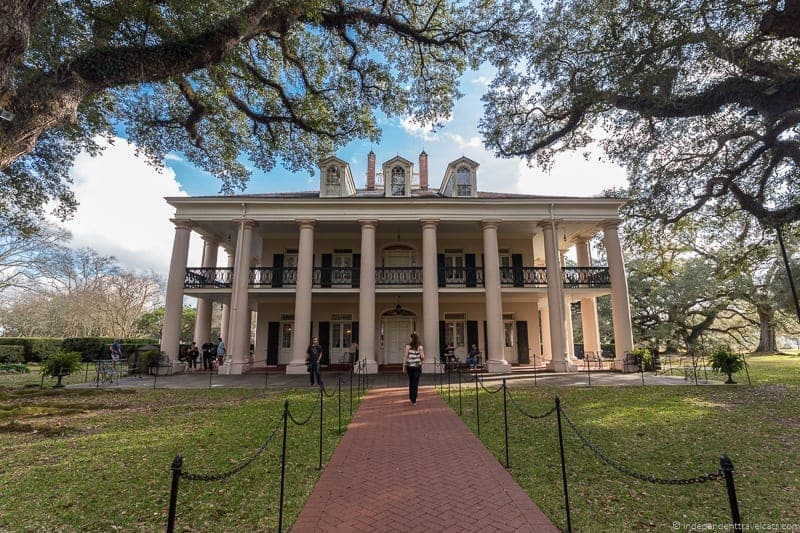
Tours of the Big House
Tours are given every 30 minutes on the hour and half-hour. The group tours are given by guides who are dressed in antebellum period costumes and the tour lasts about 30-40 minutes.
The main house tour provides a guided visit to all the rooms of the house, information about the most significant owners of the house, life on the plantation, the possible ghost activity at the plantation, and a bit of information on the TV shows and movies shot at the plantation. Many visitors find that the inside of the house seems smaller than expected compared to its outward appearance.
The house tour focuses primarily on the house and the families who lived in the house. Interesting tidbits are also woven into the tour such as the use of the courting candle, how pineapples were used in the house to let guests know they’d overstayed their welcome, mourning rituals, and how punkah fans operated. At one point the home was so neglected that birds, cows, and other animals inhabited most of the first floor!
The house is sumptuously furnished and contains a few original pieces but most are period pieces rather than those that belonged to the families who lived here. The furnishings are from the mid-1800’s in the period prior to the Civil War and help to illustrate the tales of excessive living, parties, war, and financial crises.
The first part of the tour takes you to all the public rooms on the first floor such as the parlor, dining room, and sitting room. Then you head upstairs (the staircase was completely moved during the 1920’s restoration) to view the bedrooms and nursery. You also have the opportunity for some great views from the verandah towards the Alley of Oaks and river (actual view of river blocked by levee).
We learned that although the house is rarely used for filming these days as it is open for tours almost every day of the year, several movies have been shot here including Hush Hush Sweet Charlotte with Bette Davis, The Long, Hot Summer with Paul Newman and Joanne Woodward, Primary Colors with John Travolta, and Interview with the Vampire which starred both Brad Pitt and Tom Cruise. Beyoncé fans may recognize the house from her “Déjà Vu” music video.
The house itself was built from 1837 to 1839 using primarily slave labor and is in the Greek Revival style. The owning family, the Romans, were actually related to many of the owners of other plantations along the river as many of the wealthy plantation families intermarried.
The plantation was run as a sugar cane plantation but later was also used as a cattle ranch, being used as an actual residence until 1972 when it was willed to the Oak Alley Foundation by Josephine Stewart. It would be the Stewarts who would start restoring the plantation in the 1920’s and Oak Alley Plantation was notably the first plantation along this stretch of River Road to be restored since the ante-bellum period.
Today the clocks in the plantation house are stopped to mark the hour of her death on October 3, 1972 at 7:30 a.m. to honor her memory. It is likely that without Josephine Stewart, visitors would not be strolling the halls of this mansion.
TIP: If you want to avoid crowds without staying overnight, try visiting at opening time and do the first house tour of the day and then consider having a leisurely breakfast at the restaurant! You’ll also usually find fewer crowds towards the end of the day.
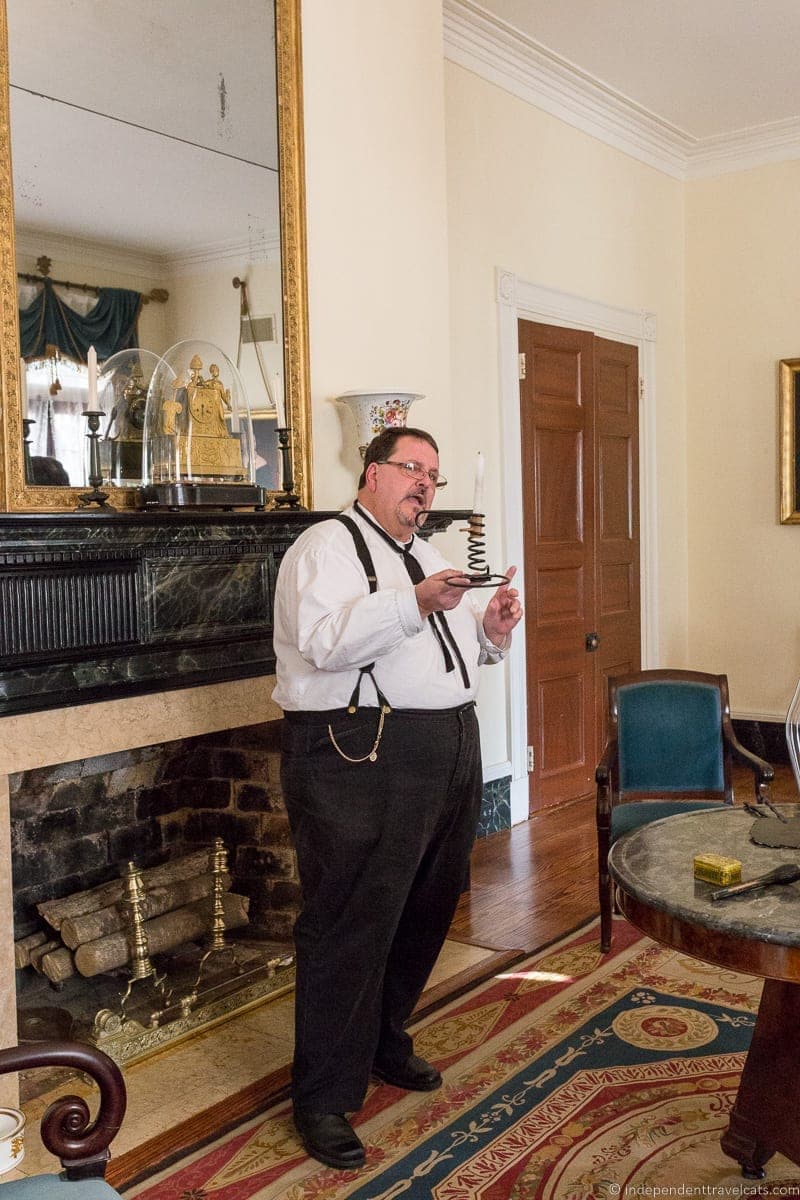
The Alley of Oaks
The grand Alley of Oaks has helped make this plantation one of the most photographed sites in Louisiana. This alley features a double row of 28 live oak trees that extends from the house to the road (not all the way to the river) and is about 800 feet in length.
There are a few interesting facts about this famous alley of oaks. First, these trees were here well before the Romans built their home in 1837 and it is unknown who actually planted the live oak trees, why they were planted, and when exactly they were planted. It has been determined by the tree’s age that they were planted between about 1725 to 1750, making them almost 300 years old. A French settler likely built a home here and planted the trees then but no real information is known. The trees can live up to about 600 years old so they are currently only about middle aged!
Another interesting mystery is why there is no Spanish moss on these trees, which is draped on most of the live oak trees throughout the region. We heard that one of the past owners had it removed because she thought it was creepy, but we also learned that Oak Alley has photos dating back to 1905 that show no Spanish moss on the trees. So even if it were removed it is unknown why it has not returned.
The lack of Spanish moss proved a problem for filming Interview with the Vampire and a lot of time and money was spent draping Spanish moss all over the trees and then removing it to make it look like the grand but eerie estate for Brad Pitt’s vampire character.
Lastly, the exterior of the main house features a free-standing colonnade of 28 Doric columns on all four sides and 28 columns were used to match the 28 oak trees in the Alley of Oaks
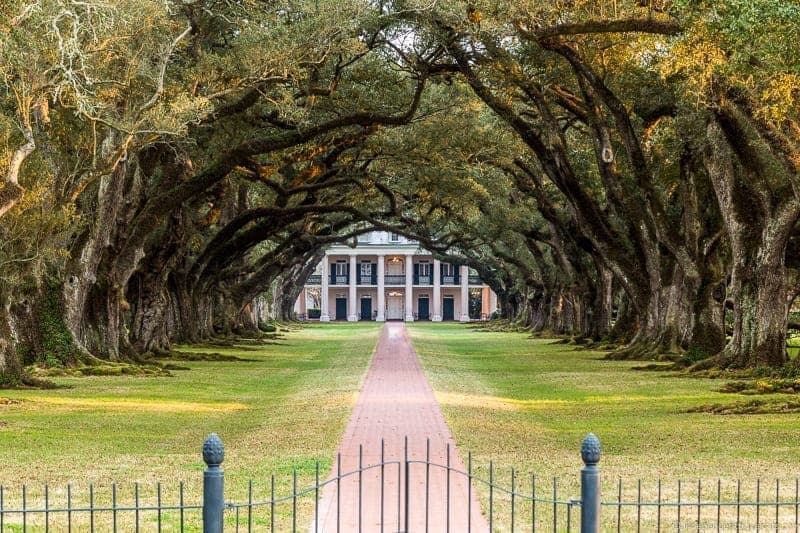
Slavery Exhibit at Oak Alley Plantation
Out of the remaining exhibits and attractions, if you are visiting with limited time, I would make sure to allow about 30 minutes for the Slavery Exhibit which focuses on the slaves that would have lived on the plantation from about 1835 to 1865.
Although the guided tour at Oak Alley is not focused on slavery, visitors should not forget that the plantation system and the wealth of this entire region was possible only with slave labor. The beautiful mansion we toured was built primarily by enslaved labor, slaves maintained the pretty grounds, and planted the sugar cane that gave the plantation owners their wealth until the end of the Civil War.
None of the original slavery cabins survive, but Oak Alley had 6 cabins reconstructed using period-consistent techniques to give visitors an idea of what they would have looked like and four have been furnished to show how they may have been furnished in different situations. Cabins depicts a field slave’s quarters, a house slave’s quarters, a sick house, and a post-emancipation residence as many of the former slaves stayed on after emancipation. Displays inside the cabins focus on religion, punishment, illness, clothing, food, and family life.
It is perhaps impossible to fully imagine the difficulty and struggles experienced by enslaved persons. In addition to the forced work, life might include violent beatings, being underfed, sexual exploitation, and separation of one’s family.
Life on a sugarcane plantation was particularly harsh for those who worked in the fields as sugarcane was one of the most demanding crops to produce and required intensive labor and long hours in hot temperatures. Accidents were frequent when cutting the cane due to close proximity of other slaves, lack of proper protective gear, and working in the fields in the dark. Snakes and rats lived in the sugarcane fields and the standing pools of stagnant water attracted malaria, leading to bites and disease.
Obviously enslaved life was hard and it was dehumanizing, whether one was a field hand or a house slave. However, like all people the slaves also built their own community, participated in things such as religious worship, gardening, and music, fell in love, had families, and experienced grief as well as joy. It is important to remember the human aspect of the enslaved people as they tried to maintain what lives they could despite their living conditions.
TIP: For those truly interested in slavery in America, we can highly recommend a visit to Whitney Plantation which is the only plantation tour in the area that focuses on slavery and is the first museum devoted to slavery in the United States. It is located about a 15 minute drive from Oak Alley, near the Laura Plantation. See our guide to 12 Louisiana plantations along the River Road for comparisons of each.
While little is know about many of the hundreds of slaves that lived at Oak Alley other than a list of names, job duties, and basic characteristics, a bit more is known about a few of the slaves. A few displays focus on the stories of these slaves.
For instance, we know that Louise Patin Roman insisted upon her death in 1836 that slave families should not be separated and that a field slave and cart driver named Zephyr from Congo should be given his freedom. Zephyr was freed by Louise’s son Jacques, but his family which included his Creole wife Zaire and two sons, Antoine and Bacchus, were not freed. Zephyr stayed on the plantation with his family and was paid a wage to work. In 1846, Zephyr would buy freedom for his wife Zaire for $350 and the two would continue to live on the plant ation until their deaths.
Zephyr and Zaire’s son Antoine would be a gardener at Oak Alley and perhaps become the most famous slave to live on the plantation. Antoine became skilled at grafting trees and in 1846 would become the first person to successfully graft pecan trees, producing a pecan with a thin shell that could be cracked with one’s hands.
His work resulted in the first named variety, Centennial, and the first commercial pecan orchard at nearby Anita Plantation (sadly washed away in a flood). The property was designated a National Historic Landmark for its architecture and landscaping, and for the agricultural innovation of grafting pecan trees performed by Antoine.
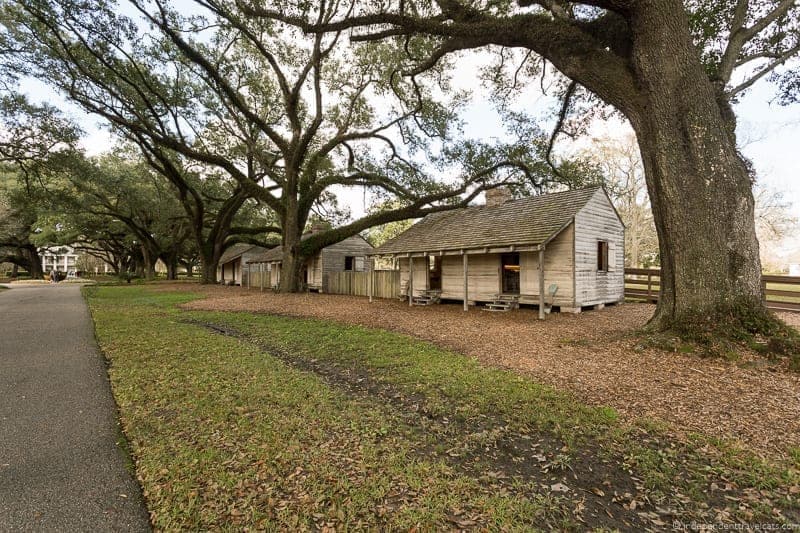
Other Exhibits at Oak Alley
Use the Visitor Map for a self-guided tour of the rest of the exhibits at Oak Alley, which include a sugar kettles, a slave marker, the old plantation bell, the Roman family tombstone, small gardens, a view of the Overseer’s House (private property), a sugarcane video, a Civil War exhibit, a blacksmith shop that includes a 1890’s era forge, and a nice gift shop.
If you have limited time, I would suggest focusing on the Civil War exhibit, especially if a historical interpreter is present, taking a look at the Sugarcane Exhibit, taking a look at the Stewart Gardens, and checking out the blacksmith ship, especially if there is a demonstration going on during your visit.
Note the sugarcane video shown during our visit in the Sugarcane Theater was produced by the sugar industry so although it is useful to learn about the current industry it is not the most objective information. There are normally information displays on the sugar cane process and slave labor at the theater, but these were not on display during our visit. I had wished for a more informative video about sugarcane production and the difficult process of its production in the time of slavery.
The gift shop attached to the restaurant also offers a quite extensive selection of gifts, souvenirs, food items, and handicrafts and is worth a stop. It is one of the largest gift shops of any of the plantations in the area.

Eating at Oak Alley Plantation
You will certainly not go hungry if you decide to spend some time exploring Oak Alley! There is both a sit-down restaurant and a cafe centrally located on the plantation.
Laurence and I had both breakfast and lunch at the Oak Alley Restaurant and also had dinner prepared by the restaurant for our dinner during our overnight stay in one of the plantation cottages. The food is Southern style with a number of Cajun and Creole dishes, including beignets, gumbo, crawfish étouffée, blackened Louisiana redfish, seafood au gratin, fried catfish, po-boy sandwiches, red beans and rice, bread pudding, and pecan pie.
For lunch, we shared the Cajun appetizer sampler (spinach and artichoke dip, crawfish cake, and fried alligator bites), the special dish of the day which was a Cajun pork filet , Cajun rice, mustard greens and a tossed salad , and th e crawfish étouffée dish . Everything was good and we recommend trying the house speciality dishes (recipes are available and there is also a cookbook for sale in the gift shop).
We were actually too full to eat dessert at lunch but we were presented with a tray full of very tempting desserts! We would have to wait until dinner to try the bread pudding.
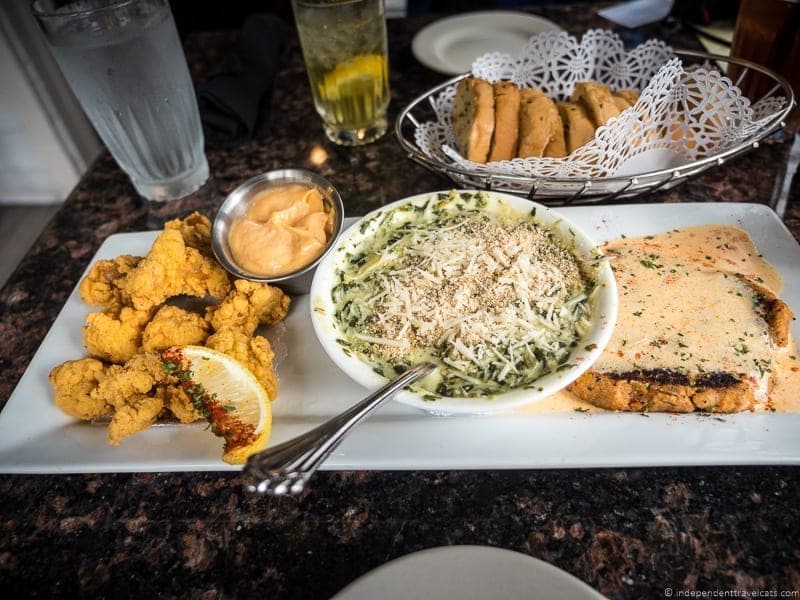
Oak Alley is also known for its mint juleps which are served in both dining areas as well as at a small outdoor pop-up bar just outside the mansion. A traditional mint julep contains mint, bourbon, sugar, and water.
There were three types of mint juleps available when we visited (original mint, lemon, frozen blackberry) plus a non-alcoholic mint julep. You can sample all three mint juleps as a flight which we of course did at the restaurant! My favorite was the lemon and Laurence really liked the sweet frozen blackberry and the original.
We can also recommend the sweet mint tea for those looking for a refreshing non-alcoholic drink.
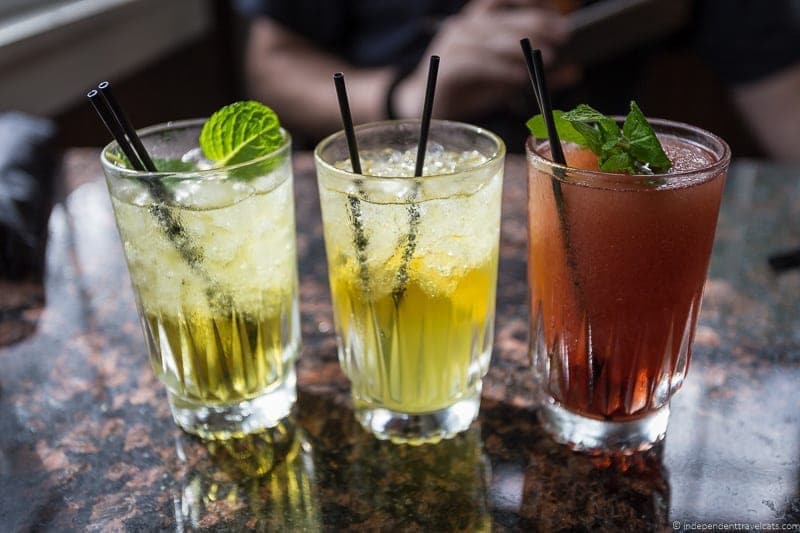
Spending the Night at Oak Alley Plantation
Check in for the cottage was easy at the Restaurant Office (white building across from the restaurant) and two staff members actually escorted us back to the main parking lot and led us to the private access road that leads to the cottages.
There is a parking space for guests near each cottage and your key gives you access to be in the cottage area of the plantation and to stroll the grounds after hours so be sure to have it on you at all times. There are both historic and newly-constructed 1 and 2-bedroom cottages; we were given Cottage #8 which is one of the newly built deluxe 1-bedroom cottages.
The staff members showed us around the cottage and explained how the Smart TV, fireplace, heating, and other things worked in our cottage before leaving. Our cottage was nicely furnished and very clean and comfortable.
We had a king-sized bed, sitting room with an electric fireplace, cable Smart TV, and a comfortable sofa, a kitchenette with a microwave, refrigerator, coffee maker and basic utensils, a bathroom with a walk-in shower, hair dryer, and basic toiletries, and a screened front porch with two chairs. Each cottage has a different layout and slightly different amenities so you should read the descriptions before booking.
Although we didn’t watch TV, we used the Smart TV to play music which was nice while sitting outside and the waffle robes were very nice to relax in after dinner. The screened porch is a great place to sip some iced tea or a mint julep in the afternoon or a coffee in the morning.
TIP: Note that mosquitoes can be a nuisance throughout Louisiana (and much of the South), especially between the months of March and October and between the hours of dusk and dawn so be sure to pack some mosquito repellent (and sunscreen!) if visiting Louisiana during this period. We visited in January and February and still experienced a few bites during our travels in Louisiana.
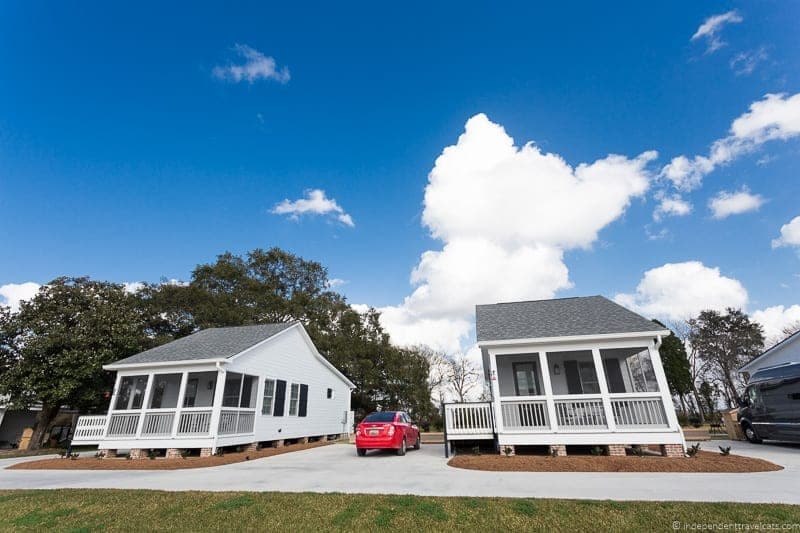
One privilege of staying overnight at Oak Alley Plantation is that you have access to the grounds for the length of your stay. While a couple of areas of the plantation are private property, you have access to the gardens, area around the mansion, oak alleys, picnic area, graveyard, and most of the grounds even after it closes to the general public.
You do not however have access to the inside of any of the buildings as the mansion, restaurant, gift shop, slavery exhibits, and other buildings are closed after the plantation closes to the public so be sure to see these during regular opening hours.
But you can explore the rest of the plantation slowly and at will. Read a book on a bench under an oak tree, stroll the grounds with a mint julep, take photos without a bunch of people in them, power walk the Alley of Oaks, or walk across the levee to watch the mighty Mississippi!
We were able to get sunrise and sunset photos of the mansion and Alley of Oaks when no one else was around and we took a walk to see the Mississippi River around sunset as well. The plantation becomes very quiet after closing time and before 8:00am with only a handful of staff and other guests on the plantation.
We were stopped a few times by polite security staff during our wanders and just had to show our cottage key.
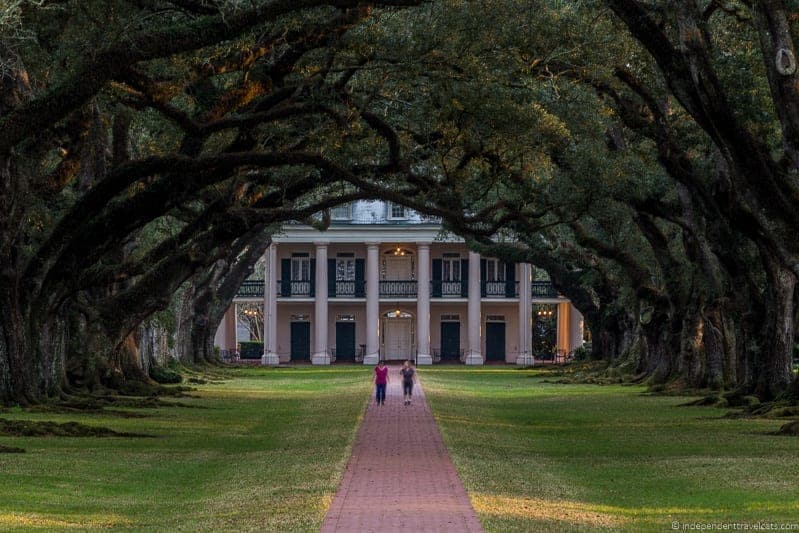
TIP: if you stay overnight, I would plan what you want to do for meals prior to your visit as options are a bit limited, especially in the evenings.
Lunch is easy to have at the plantation restaurant or café; however, the restaurant is not open in the evenings. The cottages give you the option to bring your own food (some include a full kitchen and some only a kitchenette so check ahead if you plan to cook), visit a local restaurant, or book food in advance from the Oak Alley Restaurant that will be left for you in your cottage to reheat.
Most grocery stores along the River Road are not open very late so I would pick up any groceries prior to check-in. There are no restaurants within walking distance so you will need a car and it can be up to a 30-minute drive, but there are a few recommended restaurants in the area although most require reservations and the hours and days open vary widely so do call ahead before going.
If you want to try a local restaurant, Nobile’s Restaurant & Bar in Lutcher is a 20-minute drive (currently serves lunch Monday to Friday and dinner Thursday to Saturday only) and there are two restaurants open for dinner at Houmas House Plantation & Gardens in Darrow which are a 30-minute drive, offering a more casual dinner at The Carriage House Restaurant and a formal dining experience at Latil’s Landing Restaurant (reservations required for both). Ormond Plantation in Destrehan also offers dinner at its restaurant on certain evenings (currently only on Fridays, reservations required) and is about a 40 minute drive away.
Although a nice dinner at Houmas House was tempting, we had decided to order the evening meal service in order to review it and to spend more time on the plantation.If you would like the evening meal service at Oak Alley, you just need to order it by 2:00pm the day before you arrive. We ordered the tossed salad, the chicken, sausage, and andouille gumbo served with steamed rice and rolls, bread pudding, and a pitcher of sweet mint iced tea.
Everything was placed in our cottage refrigerator on the afternoon of our stay and was all prepackaged in containers with directions on how to heat or prepare each dish. Staff had even set the table for us and put out most of the items we needed for our meal. Even re-heated the gumbo was really tasty as was the rich bread pudding with whiskey sauce!
It was really cozy and nice to have a dinner in the cottage and not have to worry about cooking ourselves or driving somewhere. Definitely recommend this if you are looking for a no-fuss option.
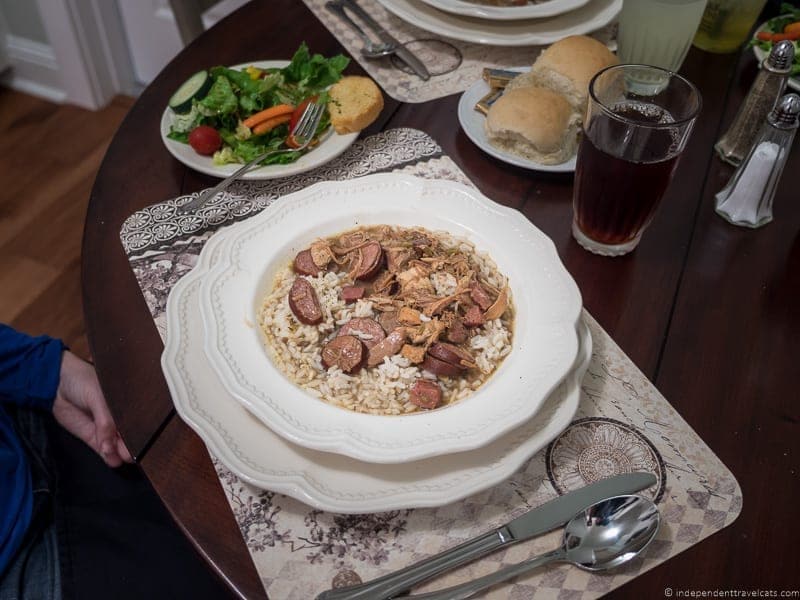
Overall Thoughts on Our Visit to Oak Alley Plantation
Oak Alley Plantation is one of the most famous plantations of the dozen or so Louisiana plantations that line the Mississippi River, and it was not difficult for us to see what attracts so many visitors. The mansion is beautiful, the Alley of Oaks is breathtaking, and the views are romantic and bucolic. In addition to the mansion, there are also several exhibits and attractions to explore as well as good food to eat and mint juleps to drink!
Most visitors are satisfied with a house tour and a quick walk around, but for those who want to experience the plantation when it is quiet and uncrowded, I would highly recommend an overnight stay. A n overnight stay gave us so much more time to visit the exhibits, enjoy a long lunch, stroll the property with a mint julep in hand, take photos in the evening and morning, and have a cozy romantic stay in a nice cottage on this beautiful property.
If you want to stay in this area but Oak Alley is booked, there are several other plantation houses where you can stay the night (as well as a handful of motels, B & B’s, and hotels) and I’d highly recommend spending a couple of days in this area rather than rushing through on a day trip from New Orleans. We actually spent almost four days in the area and visited 12 Louisiana River Road plantations to be able to write a comprehensive visitors’ guide.
We can highly recommend an overnight stay at Oak Alley Plantation and would love to return to this region some day!
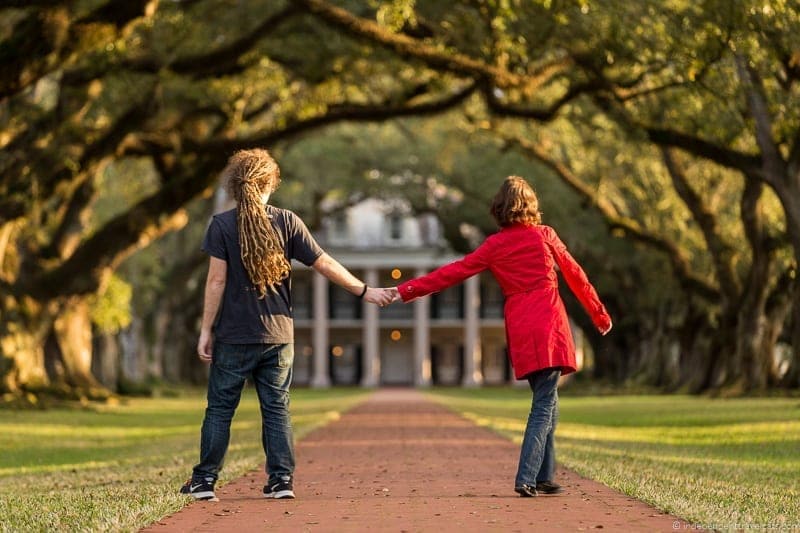
Do you think you would enjoy a visit to Oak Alley Plantation? Have you been to Oak Alley or any of the other Louisiana plantations? Feel free to share your own thoughts, tips, and advice. If you have any questions about our visit or overnight stay at Oak Alley Plantation, just ask!
**Disclosure: We were provided complimentary tours, meals, and cottage by Oak Alley in order to write a review and provide feedback; however, this article contains only our own honest thoughts and opinions. We specifically chose to visit and stay at Oak Alley Plantation. **
Share this Post!
There are 33 comments on this post.
Please scroll to the end to leave a comment
Elizabeth Lewis Post author
October 30, 2021 at 3:53 am
Do you have any recent photos of the magnificent oaks after the last hurricane? A visit to these trees is quite a spiritual experience. We visited again not long before the hurricane as they were calling to me again. Our stays there have been extraordinary
Jessica & Laurence Norah Post author
October 30, 2021 at 4:49 am
Hi Elizabeth,
You can see a report and photos of the damage caused by Hurricane Ida here that have been shared by Oak Alley about a month ago of the damage and what it looks like now after the cleanup and repairs. It did cause damage to Oak Alley but it has since re-opened. In terms of the oak alley itself, it caused a lot of shedding and some damage but it seems pretty minimal after the cleanup (see the photos before and after cleanup). They expect things to look fairly normal by Spring.
Hope that helps and hope you are able to return and stay here again.
Best, Jessica
Jane Post author
June 2, 2021 at 4:57 am
Great detailed post! Do you know if Oak Alley Plantation has opened up for overnight booking for the on-site cottages? Are the restaurants fully open? Thanks!
June 2, 2021 at 10:11 am
Yes, the Oak Alley guided house tours, restaurants, and cottages are all operating. Louisiana state guidelines regarding social distancing apply but table service is offered now in the restaurant. The overnight cottages can be booked online either on the website or by calling them directly.
Tickets for tours can be purchased on arrival or you can join a guided tour that includes your ticket price. There are both group and private tours currently operating from New Orleans.
So everything is open as far as I know, just expect the normal guidelines regarding social distancing, hand hygiene, and face masks to apply if you are traveling there soon.
James Post author
May 29, 2021 at 11:34 am
This place and All other plantations were built on slaves backs and horrific things happen here this isn’t anything great about this place
May 30, 2021 at 12:47 pm
Thanks for sharing your opinion and yes indeed Oak Alley was built by slave labor as were most other plantations built before the Civil War. This is clearly acknowledged by the people who run Oak Alley. But if you are specifically interested in learning about slavery, Oak Alley may not be the best place to visit.
Plantation visits are not for everyone. Of course, if people did not visit any places associated with slavery or other horrible events in human history, there would be few places one could visit. Many buildings before the Civil War, from universities to the U.S. Capitol to libraries, churches, and homes were built by slave or indentured labor or by bricks and other materials made by slaves.
But some plantations are used primarily to teach people about slavery such as the nearby Whitney Plantation. It is the only plantation in Louisiana (there are others in other states) to focus on the story of slavery. In fact, it is credited as the first museum dedicated to slavery in the United States. I think that places like this can be powerful places to learn about the history and impact of slavery. If you are in the area, check out Whitney and I’d love to hear what you think.
Francisco Post author
January 26, 2020 at 8:27 am
One thing that everyone must know about these oak alley photos: it’s almost impossible to take a shot without any crowd behind of your shots at the plantation. So plan it carefully if you’re planning wedding shots or something that crowds of people would be a concern on your photos.
January 28, 2020 at 9:15 am
Hi Francisco, Yes, as noted, Oak Alley is a busy and popular tourist attraction and so it can be difficult, but not impossible, to get photos without other people. We recommend going near opening time, near closing time, or staying overnight on the property for best photo opportunities. But it is fairly easy to still get great photos with proper angling around the estate and trees at almost any time of the day 😉
However, if you are planning wedding shots, like at most private places, if you are taking photos for commercial use or for a wedding, engagement, graduation, etc. you’ll need to schedule a photo session at the property and pay a photo session fee. They will then help you schedule a date and time, depending on if you want interior photos or just exterior photos. You’ll want to schedule that in advance with the Oak Alley events team.
Amanda Post author
January 17, 2018 at 7:22 am
Hi! Just found your blog. My daughter and I did a drive through vacation, a few years back. One of the stops was here at Oak Alley. We had such a marvelous time, and ate at their restaurant for lunch. Fantastic food. Beautiful scenery. And such sweet people. Had no idea that they had the cottages, but we already had reservations elsewhere, along our travel route, and had to stick to it. Would certainly love to go back though. It really is a beautiful and peaceful place.
January 17, 2018 at 1:11 pm
Hi Amanda, Yes, if you have a chance to return, I’d consider spending the night at Oak Alley Plantation as the cottages are nice. It is really peaceful and you are able to walk around after visitors have left and they’ve closed the gates. There are also loads of other plantations along the River Road that you can visit as well. We also would love to return to Louisiana and see more of the state as we have mainly only seen Baton Rouge, New Orleans and the River Road which runs in between the two cities! Best, Jessica
April Yap Post author
June 3, 2016 at 2:38 am
Thanks for sharing awesome information about Oak Alley Plantation and the Louisiana plantations. I should take note all of these for my short-term memory. lol
travelcats Post author
June 3, 2016 at 8:24 am
Hi April, Yes, such a beautiful plantation and if you have a chance to stay overnight at Oak Alley Plantation, I would definitely consider it. The food is good too! Best, Jessica
shruti Panday Post author
May 12, 2016 at 2:39 am
The cottage looks so nice! Those trees are truly special. Would absolutely love to go there!
May 12, 2016 at 6:52 am
It was a really nice cottage and so nice to have a comfortable and peaceful place to relax in between Baton Rouge and New Orleans. I hope you have the chance to travel to Louisiana and visit here some day!
Michele {Malaysian Meanders} Post author
May 10, 2016 at 11:02 pm
I visited Louisiana as a teenager, and Oak Alley is one of the memories that really stand out. I would love to return and especially stay in one of the cottages. I’m so glad to know that they have airconditioning as the summer heat and humidity can be oppressive there. The food at the restaurant looks delicious, too. I’ve been meaning to head back to New Orleans some day, and now you are really giving me some motivation with this great post.
May 11, 2016 at 4:27 am
Hi Michele, Oh, nice that this post sparked a fond memory of your time in Louisiana. Yes the heat and mosquitoes can make summer a bit less desirable and we were there in winter which was great:) I would suggest avoiding summer if you can as the heat, humidity, crowds, and mosquitoes can be a nuisance. I hope you get the chance to return and stay in one of the cottage! ~ Jessica
Anda Post author
May 10, 2016 at 12:47 pm
I love the Oak Alley Plantation, Jessica! I visited the place at least three times so far, if not more. There was a time when my husband had to go to New Orleans every year and we always made sure to go by the plantation as well. You’ve got the most perfect pictures of the Oak Alley Plantation that I have ever seen! Your post makes me want to go bach there again.
May 10, 2016 at 4:40 pm
Hi Anda, Wow, that is a lot of visits. New Orleans is a great city and you are lucky you got to visit so many times. I am sure you’ll return again some day! ~ Jessica
Rob Post author
May 10, 2016 at 2:02 am
What a fantastic post! When last we visited Oak Alley, the cottages were not open – so we feel a need to return! We did have dinner at Houmas House, though, and very much enjoyed it. Great pictures and info! Thanks for sharing.
May 10, 2016 at 3:32 am
Thanks Rob, yes, staying in a cottage for a night or two is a wonderful way to appreciate the grounds, the river, and the beautiful Alley of Oaks. I wish we would have made time for dinner at Houmas House during our time in the area, it sounds fantastic and was recommended to us by Oak Alley staff. ~ Jessica
Rachael@safari254 Post author
May 10, 2016 at 1:53 am
First and foremost gorgeous photos …
I have read about the Oak Alley plantation before. Check out this post from Dana, she’s got some interesting perspective of the place although not nearly as detailed! http://www.thatgirlcarmel.com/impressions-of-oak-alley-plantation/
May 10, 2016 at 4:08 am
Hi Rachael, Thanks, this is an easy place to take gorgeous photos and one of the most photographed locations in the state which is the main reason we were keen to spend the night here.
Thanks for the link. I have actually read a lot of perspectives about plantation tours as we have toured dozens of them within the South and you do get a few guests (perhaps even guides!) who have inappropriate questions/comments but we actually didn’t experience this much ourselves. A guide to plantations in this area is in the works and will hopefully help travelers find one that fits what they are looking for as I think people think they are all the same, but there are a lot of differences in the focus of many of them. In regards to slavery, I think that many plantation tours do not, at least historically, put much emphasis on slavery and the lives and work of the slaves. This has definitely changed for the better over the years but there is still much more that can be done. Oak Alley’s slave exhibit is one such example of improvement along with their research archives on slavery (what little records they have are available). I would actually have loved the option for a short guided tour of the slave exhibits at Oak Alley and I hope they are able to add this in the future. The House Tour at Oak Alley is not meant to focus on slavery and doesn’t do so although slavery was acknowledged several times during our tour. The House Tour focuses on the owners and their lives and is meant to show guests the interior of the home and what it would have looked liked during the residency of the Roman family. I think those not interested in hearing about the owners and their house should consider skipping the house tour and just visit the grounds and exhibits. Each plantation has a slightly different focus and some focus on the owners, some on architecture, some on furnishings/antiques, and some on slavery. Whitney Plantation, which we also visited, focuses primarily on slavery but also does a tour of the plantation house and focuses a little on architecture, farming, and the owners but the primary purpose and focus is the lives of the slaves. Next door, the guided tour at Laura is a good mix of the family, Creole culture, the architecture, and slavery. So I think travelers have a lot of choices about where they go as there are almost a dozen plantations open for tours in the area. ~ Jessica
J Post author
September 27, 2020 at 3:00 am
Thank you. Very helpful review.
Ruth Post author
May 8, 2016 at 9:01 pm
Wonderful post as always! I felt transported to this place thru your words and photos. That oak tunnel is something else. I can’t believe how unreal it looks. The trees look like creatures of a fairy tale.
May 9, 2016 at 12:47 pm
Thanks Ruth! Yes those trees are amazing and do have a very mysterious but romantic look to them, especially in the evening hours. ~ Jessica
jim@reflectionsenroute Post author
May 8, 2016 at 1:46 am
I’ve never even thought you could stay in a cottage at a plantation. What a unique experience. The food looks amazing and your photos are as incredible as ever!
May 8, 2016 at 4:41 am
Hi Jim, Yes it was a unique experience that most visitors to the NOLA plantation area don’t think about. The food was really good – Laurence had never had American Southern food prior to our trip and was amazed by all the dishes he’d never tried throughout our recent Southeast adventure. Mint juleps are the specialty at Oak Alley and it was nice to stroll the property on a warm day with one in hand:) ~ Jessica
Roshan Post author
May 7, 2016 at 10:23 pm
Would absolutely love to go there!
May 8, 2016 at 4:36 am
Hi Roshan, Oak Alley Plantation is a great place, I hope you get there some day!
Cathy Post author
May 7, 2016 at 9:10 pm
What beautiful old trees that clearly have stories to tell! Great tips for a stay at a unique spot!
May 8, 2016 at 4:35 am
Hi Cathy, Indeed, these trees are amazing! I wonder if someone will discover more about their history, who planted them, and why Spanish moss fails to cling and grow to them. Oak Alley has one of the most photogenic oak alleys in the world, although we did see several others in the South – we fell in love with the lovely trees and flowers in the Southeast during our road trip! ~ Jessica
Seana Turner Post author
May 7, 2016 at 2:41 pm
I’ve never been to Louisiana. I’m glad that you wrote this because it NEVER would have occurred to me that you could stay overnight. And the cottage looks so nice! Those trees are truly special… what a treasure. But it is thought provoking to compare the splendor of the mansion with the slave cabins. Such a sad time for our country’s history…. but the food – oh my goodness that looks good!!!
May 8, 2016 at 4:30 am
Hi Seana, Yes, it was our first time in Louisiana as well and we’d love to return as we really only spent time in Baton Route, New Orleans, and the distance between these two great cities. The cottage at Oak Alley was great; we were actually more interested in a historic cabin, which are less expensive but were booked, but we ended up really liking our modern deluxe cabin as it are so nice! In addition to Oak Alley, there are several other plantations offering overnight accommodations which I think is a really nice way to experience a place like this. It was so nice to walk around in the mornings and evenings. We definitely spent a lot of time reflecting on (and Laurence learning about as a non-American) slavery, the Civil War, and civil rights as we made our way through several states in the South during our road trip in January/February. ~ Jessica
Leave a Reply Cancel reply
Your email address will not be published. Required fields are marked *
Notify me of replies to my comment (just replies to your comment, no other e-mails, we promise!)
Subscribe to our monthly Newsletter where we share our latest travel news and tips
We only ask for your e-mail so we can verify you are human and if requested notify you of a reply. To do this, we store the data as outlined in our privacy policy . Your e-mail will not be published or used for any other reason other than those outlined above.

Felicity Plantation

Felicity Plantation is a historic sugarcane plantation on the banks of the Mississippi River in the U.S. state of Louisiana. It is located along Louisiana Highway 18 in Vacherie, St. James Parish. Felicity is a sister plantation to St. Joseph Plantation and was built around 1846 (or 1850) by Valcour Aime as a wedding gift to his daughter, Felicite Emma, and her spouse, Septime Fortier, who was also her cousin. The plantation was purchased by Saturnine Waguespack in 1890, who merged it with the St. Joseph Plantation to form the St. Joseph Plantation and Manufacturing Company. The house still remains in the Waguespack family.
Open 7 Days a Week! Book Online or call 225-265-4078 to arrange a visit!
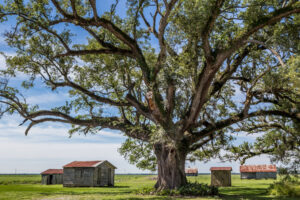
- stay out here
- itineraries
- Getting here
- travel trade
- View Our destination guide
- Special Offers
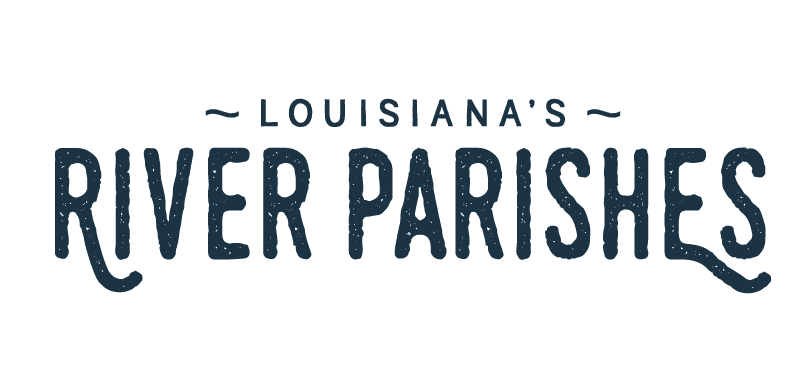
- Felicity Plantation
- Plantations
- Bus Parking
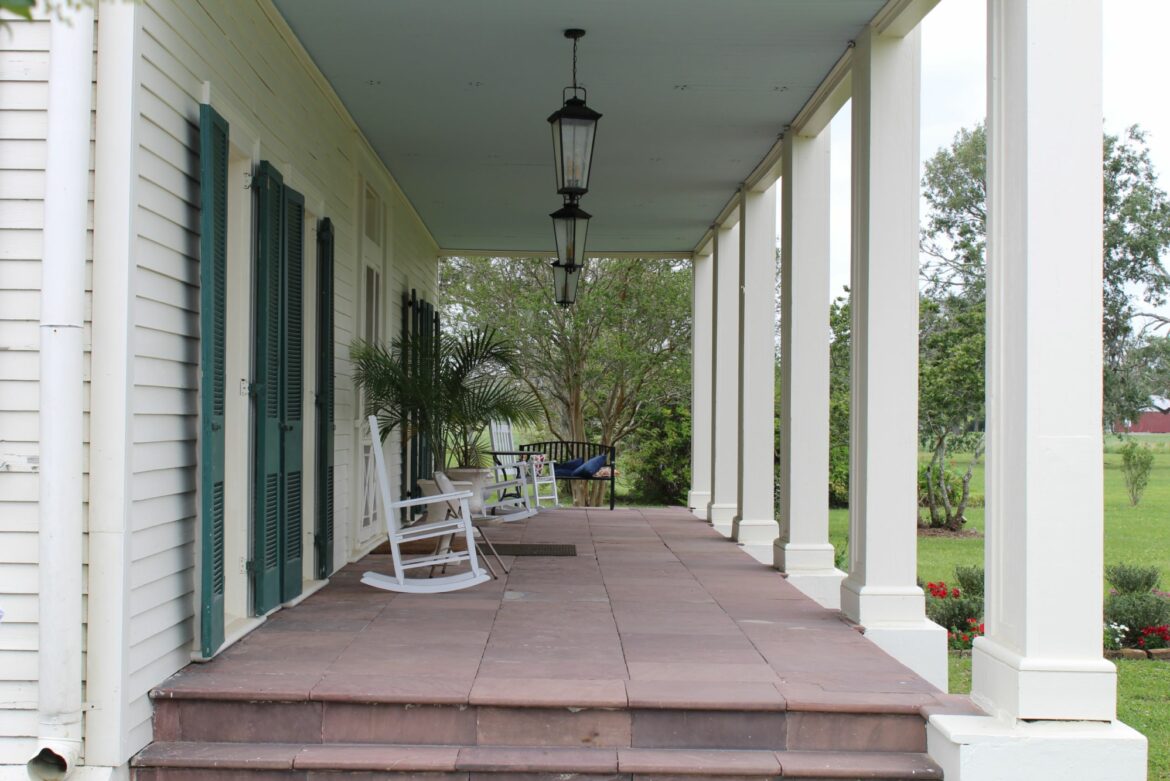
Felicity Plantation is a historic sugarcane plantation on the banks of the Mississippi River in the U.S. state of Louisiana. It is located along Louisiana Highway 18 in Vacherie, St. James Parish. Felicity is a sister plantation to St. Joseph Plantation and was built around 1846 (or 1850) by Valcour Aime as a wedding gift to his daughter, Felicite Emma, and her spouse, Septime Fortier, who was also her cousin. Acquired by a bank in 1873, the plantation was purchased by Saturnine Waguespack in 1890, who merged it with the St. Joseph Plantation to form the St. Joseph Plantation and Manufacturing Company. The house remains in the Waguespack family.
START BOOKING. FIND THE RESOURCES YOU NEED.

New Orleans PLANTATIONS Country
Explore the 10 historic estates in the River Parishes of Louisiana and discover the stories rooted in their past.

New Orleans SWAMP Country
Create memories learning the folklore of our swamps and viewing gators in their natural habitat.

ANDOUILLE Trail
Andouille was created here, so get out and try the local smokehouses that each have their own version of the "best".

OUTDOOR RECREATION
The region out here is perfect for outdoor enthusiasts to explore and find adventure.

Lac Des Allmands
Famous for catfish, Lac Des Allemands is a haven for outdoor sportsmen.
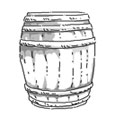
Enjoyed around the world, Perique can only be grown and processed out here.

CAJUN & CREOLE CUISINE
Cajun and Creole cuisine are as necessary to our culture as the people who make it.

TRANSPORTATION
Tour buses, shuttles and local airports are all transportation options for the River Parishes.

STAY OUT HERE
Louisiana's River Parishes offers a wide range of lodging options from rustic and quaint to upscale and luxurious.
STILL Have Questions? Drop us a line AND REQUEST A VISITORS GUIDE.
HISTORY & LEGACIES
Whitney plantation, the plantation every american should visit, -national geographic.

THE WHITNEY INSTITUTE EDUCATES THE PUBLIC ABOUT THE HISTORY AND LEGACIES OF SLAVERY IN THE UNITED STATES
Whitney Plantation (legal name The Whitney Institute) is a non-profit museum dedicated to the history of the Whitney Plantation, which operated from 1752-1975 and produced indigo, sugar, and rice as its principal cash crops. The museum preserves over a dozen historical structures, many of which are listed on the National Register of Historic Places as the Whitney Plantation Historic District.

COME EXPERIENCE
Visit the museum.

HOURS & TICKETS

LOCATION & DIRECTIONS
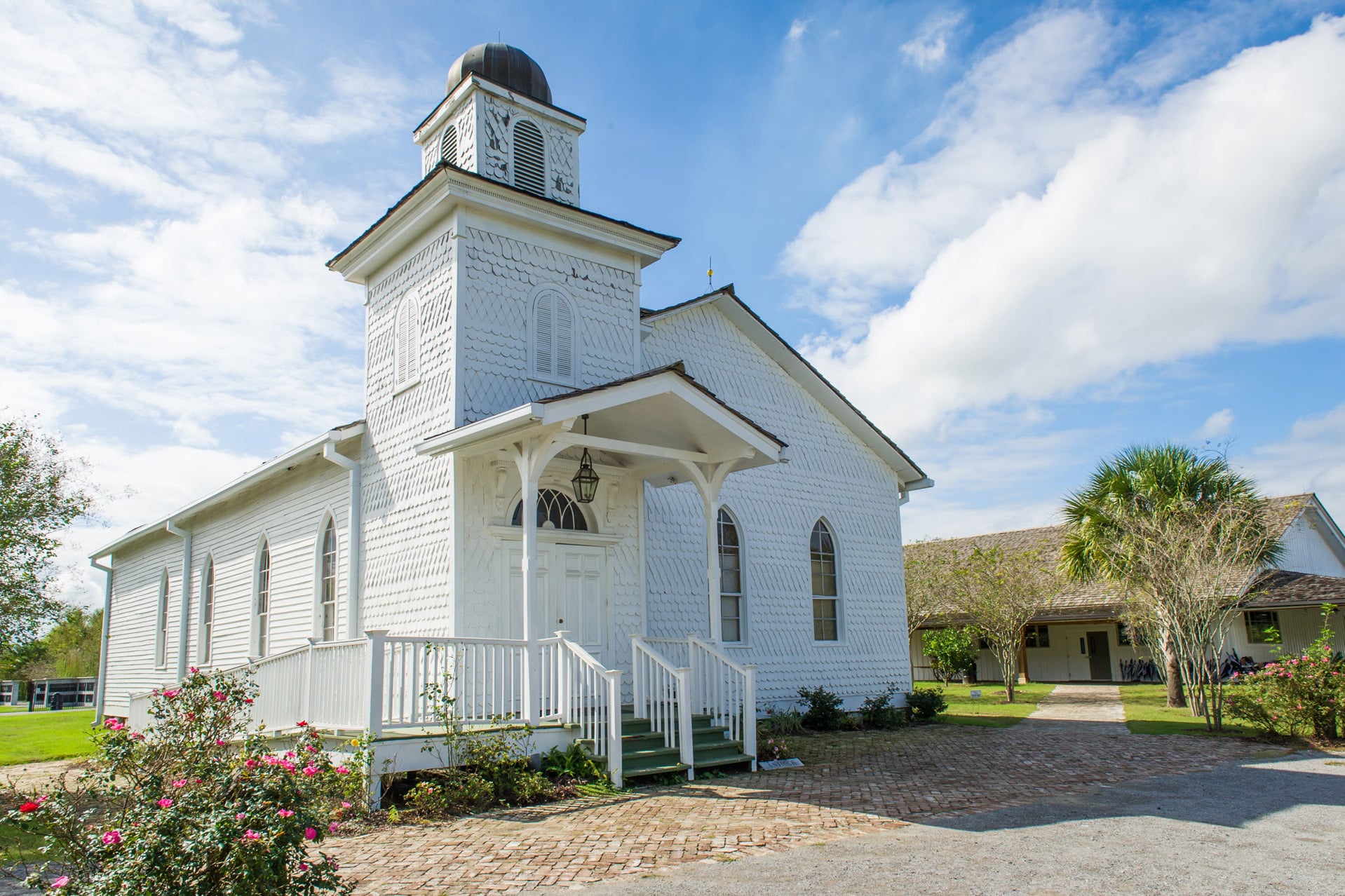
VISITOR GUIDELINES

PHOTO & VIDEO POLICY
Your support matters, in these uncertain times, our mission continues., @follow us on instagram, whitney plantation on social media, events & seminars, whitney plantation events, temporary exhibit on view march through august 2025, extractivism.

Free film preview and artist talk
Extractivism: artist talk and film preview.

KEEP UP TO DATE WITH WHITNEY PLANTATION
- PLAN YOUR VISIT
CALL US TODAY
(225) 265-3300
5099 LOUISIANA HWY 18 EDGARD, LA 70049
New Orleans Plantation Tours
Visit these architectural emblems and learn about the african-american history of louisiana on the best new orleans plantation tours..
- User All Ages
- Hour Glass 5 Hours
Oak Alley Plantation Tour
Legendary tours.
A powerful testimony to the rich history of the antebellum south, Oak Alley invites visitors to explore all facets of her plantation past as they tour the grounds, exhibits, and museums.
Whitney Plantation Tour
Crescent city tours.
Whitney plantation is the only plantation Museum in Louisiana with an exclusive focus on the lives of enslaved people. Enter the world of Louisiana sugar plantation and to remember those built and worked this property.
Laura Plantation Tour
Tour Laura Plantation, one of only 15 Plantation complexes in Louisiana with this many complete structures. Because of its historical importance, the Plantation is on the National Registry of historic places!
Oak Alley Or Laura Plantation Tour
Southern style tours.
Come take a journey back in time and see Louisiana’s beautiful plantations. Over the years these plantations inspired many people to write books, screen plays and feature them in movies.
Tour the Historic Plantations Around New Orleans
Just outside of New Orleans, elaborate Antebellum-era plantation houses line Louisiana’s famed River Road. Built by sugar plantation owners, the homes feature marvelous piazzas, manicured gardens, and stately pillars. Many of them still standing today, the plantations of the Antebellum South pay homage to the state’s agrarian past and slave culture. From the impressive architectural marvels of the big homes to the surviving outbuildings where slaves lived in close quarters, every inch of these plantation homes is rich with history that brings the stories of enslaved people to life. Visit these architectural emblems and learn about the African-American history of Louisiana on a New Orleans plantation tour.
Learn About Louisiana's Popular Plantation Homes
- Chevron down Whitney Plantation
One of the most famous plantations near New Orleans, the Whitney Plantation features a museum that is the only of its kind with an exclusive focus on the lives of enslaved people. On a self-guided plantation tour, you can learn all about the history of this fascinating sugarcane plantation, as well as the stories of slavery and the people who lived there.
Founded by German immigrants in the 1700s, the Whitney Plantation first produced indigo, an important crop in Louisiana’s economy. At the time, there were about 20 enslaved Africans working the land. But by the 1800s, over 100 enslaved workers lived at the plantation, producing as much as 400,000 pounds of sugar in a single season.
Before the Whitney Plantation opened to the public in 2014, it underwent 15 years of restorations and is now a beautiful testament to the history of slavery in Louisiana. There are at least 12 historic structures on the property as well as memorials, examples of Spanish Creole architecture, the slave quarters, and a church. Don’t miss a chance to visit this amazing property on a NOLA plantation tour.
- Chevron down Oak Alley Plantation
Located on the west bank of the Mississippi River, Oak Alley Plantation is a must-visit plantation near New Orleans. It gets its name from the impressive alley of 28 live oak trees that line the path leading up to the main entrance of the house. The grounds at Oak Alley are a sight to behold, with wide pastures, a formal garden as well as several others, and agriculture crops. The big house is an architectural marvel, with beautiful columns, wrought-iron balconies and a lavish interior that sends visitors back in time to the days of working plantation homes.
The most important aspect of the Oak Alley Plantation’s legacy is its slavery exhibit, which details the lives and living conditions of the men, women, and children who were kept on the property. Built on slavery, Oak Alley was established as a sugar cane plantation, but it was also a cattle ranch at one point in its history.
Today, you can explore the grounds and the interior of the big house, as well as the slavery exhibit, Civil War exhbiti, sugarcane theater, and 300-year-old alley of oaks. On a tour of Oak Alley plantation, discover the history of the home throughout the years and the enslaved people who kept it running.
- Chevron down Laura Plantation
The Laura Plantation is one of the best plantations to visit. It’s a restored Louisiana Creole plantation that is open for day tours from New Orleans. At its largest, its grounds covered 12,000 acres and produced rice, pecans, sugar cane, and indigo. Though it was originally called l’habitation Duparc, after the family that owned it, it was later renamed the Laura Plantation after one of the family members.
The Laura Plantation is significant to Louisiana and New Orleans for its early 19th-century Creole style big house and outbuildings, where slaves dwelled in cabins. The Laura Plantation is actually one of only a handful of Louisiana plantation complexes with so many surviving structures. In fact, it’s one of only 30 Creole raised houses in Louisiana. The floor plan is unique in that its two rows of five rooms all open directly into each other without hallways. Inside, you’ll find a collection of family heirlooms from the owners, as well as period apparel and additional relics of the plantation’s history.
Various displays throughout the plantation highlight the lives of enslaved people, both Creole and American, and how they spent their days at the plantation. See documents and rare photographs that bring their stories to life. One of the people you can learn about is Creole brick mason, Edouard, who left the plantation to fight in the Union Army. Experience the Laura Plantation on a guided tour.
Explore More Things to Do in NOLA
Swamp tours.
Book Now »
French Quarter Tours
Cemetery tours.

Today Only: Special Rates on Bayou Tours! Call to Book
The Best Plantations in Louisiana
- April 24, 2024
- No Comments
Discover the best plantations of Louisiana stand as historical landmarks, offering a window into the state’s past, from the grandeur of the antebellum era to the harsh realities of slavery.
They are a testament to the state’s agricultural development, particularly in sugar cane cultivation, and have become a focal point for cultural preservation and education.
Today, these plantations provide a multifaceted experience, ranging from historical tours to stays in charming inns, and from sampling Southern cuisine to exploring the rich tapestry of Louisiana’s Creole heritage.
Table of Contents
Historical Significance of Louisiana Oak Plantations
The Role of Plantations in Louisiana’s Economy
The vast expanses of plantations in Louisiana were not just picturesque landscapes but the economic powerhouses of their time. The cultivation of sugar cane, in particular, became the backbone of Louisiana’s economy, with plantations like the Magnolia Plantation leading in production. The fertile alluvial soil and the warm, moist climate provided the perfect conditions for sugar cane growth, necessitating a significant labor force to manage the cultivation and harvesting processes.
- In 1883-4, Louisiana harvested over 172,400 acres of cane.
- This resulted in a total crop of 128,000 tons of sugar.
- Magnolia Plantation alone had 492 acres in cane.
The reliance on slave labor was a dark yet integral aspect of this economic success, with the plantation system deeply intertwined with the slave trade. The prosperity of plantations such as Oak Alley, known for its iconic alley of Southern Live Oak trees, was built on the exploitation of enslaved people, a fact that contemporary society must acknowledge and learn from.
The plantation economy was not isolated but connected to a wider network of trade and commerce, influencing the cultural and social landscape of Louisiana and beyond.
Sugar Cane Cultivation and Harvesting
The cultivation and harvesting of sugar cane were central to the prosperity of Louisiana’s plantations. As a staple crop, it made Louisiana’s economy and its plantation elite vast fortunes. The process was labor-intensive and required a significant workforce, which was largely made up of enslaved individuals. The types of slaves planters wanted to purchase were influenced by the demands of sugar production, with a system that was noted for its harshness and gender-based division of labor.
Sugar cane cultivation followed a meticulous cycle. Plantations began to grow cane in February, and harvesting took place from October to January. The initial cutting of new plants left a stool that sent up another growth of cane, known as “ratoons,” which were believed to yield sweeter juice and finer sugar. Despite the challenges of pests and weather, the fields of leafy cane were a sight to behold, stretching across vast expanses of land.
The one planting will last many years, but Louisiana sugar-growers reckon only on three years’ product, planting a third of the sugar ground anew each year.
The historical data reflects the scale of sugar cane production. For instance, in the year 1883-4, over 172,400 acres of cane were harvested, resulting in a total crop of 128,000 tons of sugar. However, the following year saw floods that significantly damaged the crop, illustrating the vulnerability of this agricultural system to environmental factors.
The Impact of Slavery on Plantation Life
The legacy of slavery is an indelible part of Louisiana’s plantation history. The brutal system of forced labor not only built the wealth of plantations but also left a deep scar on society. Visitors to these historic sites often receive a sanitized version of this past, with the critical role of enslaved people glossed over during tours, particularly in the grandeur of the main houses.
The artifacts and reconstructed slave quarters on plantations like Oak Alley provide a stark window into the daily lives of the enslaved. These exhibits, while sobering, are essential for a full understanding of the plantation’s history.
The Civil War brought devastation to many plantations. For instance, the Magnolia Plantation faced significant destruction during the Red River Campaign, with retreating troops burning the main house. This event is a poignant reminder of the tumultuous period and its effects on the plantation system.
While the plantations are a testament to the agricultural history of Louisiana, they also serve as educational grounds to confront the harsh realities of slavery and its impact on the lives of countless individuals.
Iconic Plantations and Their Legacies
Oak alley plantation.
Oak Alley Plantation stands as a testament to the grandeur and complexity of the antebellum South. Visitors are greeted by the iconic alley of 300-year-old oak trees, a breathtaking introduction to the plantation’s storied past. The mansion itself, a marvel of antebellum architecture, offers a window into a bygone era, juxtaposed with the sobering history of slavery that underpinned the estate’s existence.
The experience at Oak Alley goes beyond mere aesthetics, provoking a deep reflection on the historical intricacies of the American South.
While the plantation’s beauty is undeniable, it is the layers of history that captivate those who walk its grounds. From the sugar cane fields that once fueled Louisiana’s economy to the stories of those who lived and toiled here, Oak Alley encapsulates the dual narrative of Southern opulence and the human cost at its core.
For those interested in delving deeper into the region’s history, nearby plantations such as the Felicity Plantation offer additional perspectives, each with its own unique story to tell.

Magnolia Plantation
Magnolia Plantation stands as a beacon of agricultural prowess in Louisiana’s history. The plantation’s layout was both aesthetically pleasing and highly productive, showcasing extensive gardens with shady avenues of orange trees and an array of perfumed flowers. The plantation’s success was not only in its beauty but also in its vast cane fields, which contributed significantly to the state’s economy.
The plantation’s sugar-house, filled with advanced machinery, symbolized the innovation of the time. The neat white cottages for laborers were indicative of a well-organized estate. Despite the picturesque scenery, it’s important to acknowledge the harsh realities of the past, where the prosperity of such plantations was built on the backs of enslaved individuals.
Magnolia Plantation’s legacy is a complex tapestry of beauty intertwined with the somber history of slavery. It serves as a reminder of both the ingenuity and the inhumanity of the era.
The plantation’s historical significance is further highlighted by its connection to cultural developments, such as the Eclipse brass band, which had roots in Magnolia Plantation and was a project of Humphrey’s, contributing to New Orleans’ rich musical heritage.
Contemporary Experiences at Louisiana Plantations
Staying at plantation inns and cottages.
Louisiana’s plantations offer more than just a glimpse into the past; they provide an opportunity to immerse oneself in the history and charm of the South through unique accommodations. Staying at plantation inns and cottages allows visitors to experience the grandeur of antebellum architecture and the tranquility of the surrounding landscapes.
For those seeking an authentic Southern dining experience , the Oak Alley Plantation Restaurant & Inn serves up local favorites such as Crawfish ‘touff’e over Fried Catfish and Shrimp & Gumbo. The inn also features a gift shop for those looking to take a piece of Louisiana home.
The intimacy of plantation stays is complemented by the rich cultural tapestry of the region, offering a serene retreat from the bustling city life.
Accommodation options vary from the rustic charm of the Coco House to the elegance of the Judge Clarke Woodruff Suite. Here’s a quick overview of what you might find:
- General David Bradford’s Suite
- William Winter Room
- John Leake Room
- Ruffin Stirling Room
- Fannie Williams Room
- Caretaker’s Quarters
- The Cottages
- The Garden Rooms
While the plantation grounds are expansive, they are easy to navigate with clear signposts and maps available upon arrival. This ensures that guests can effortlessly explore the historical sites at their leisure.
Culinary Delights
The plantations of Louisiana offer more than just a glimpse into the past; they serve as gateways to the rich culinary traditions of the South. Visitors can indulge in authentic Southern cuisine that is as much a part of the region’s heritage as the historic homes themselves. From the classic seafood gumbo to the sweet pralines, each dish tells a story of cultural fusion and local bounty.
The experience of Southern dining is an integral part of the plantation visit, providing a taste of the local flavors that have been savored for generations.
Louisiana’s plantations are not only historical landmarks but also hubs for gastronomic exploration. The Oak Alley Plantation Restaurant & Inn, for example, offers a menu featuring dishes like Crawfish Étouffée over Fried Catfish and Shrimp & Okra Gumbo. Here’s a taste of what you might enjoy:
- Seafood Gumbo
- Red Beans & Rice
- Muffulettas
For those seeking a deeper connection to the region’s food scene, the French Quarter Food Tour is a must. It combines sightseeing with food sampling, allowing visitors to learn about New Orleans’ unique food identity.
Combining Plantation Visits with Other Local Attractions
Louisiana’s rich history and vibrant culture extend beyond the plantation grounds, offering visitors a chance to combine educational tours with a variety of local attractions. Exploring the region’s unique offerings can turn a simple visit into a full-fledged cultural experience.
For those interested in the natural beauty of Louisiana, combining a plantation tour with a swamp tour presents an opportunity to witness the state’s diverse ecosystems. Many tour companies, such as Cajun Encounters, offer packages that include transportation and guided tours, ensuring a hassle-free adventure.
Visitors can also indulge in the festive traditions of Louisiana by attending events like Bonfires on the Levee. This unique celebration is a testament to the region’s cultural heritage, providing a lively atmosphere that complements the historical insights gained at the plantations.
Here’s a snapshot of popular combined experiences:
- Swamp Boat Ride and Oak Alley Plantation Tour from New Orleans
- Airboat and Plantations Tour with Gourmet Lunch from New Orleans
Please note that package tours may limit the time available at each location, so plan accordingly to make the most of your visit.
The Cultural Tapestry of Louisiana Plantations
Creole Heritage at Laura Plantation
Laura Plantation stands as a vibrant testament to Louisiana’s rich Creole heritage. The guided tours at Laura provide a deep dive into the cultural tapestry of the plantation’s past, offering insights into the lives of both the owners and the enslaved individuals. Visitors often express a profound connection to the plantation’s history, with many leaving with a desire to learn more about this pivotal site.
The plantation’s narrative is brought to life through the stories and details that are too often left untold. A recent addition to Laura Plantation is a permanent exhibit that delves into the biographical details of Africans on the plantation, tracing their journey from enslavement into the 20th century.
The experience at Laura Plantation goes beyond the grandeur of its architecture, inviting guests to reflect on the complex history and enduring legacies of those who lived and worked there.
For those seeking an authentic historical perspective, Laura Plantation offers a more nuanced and educational experience compared to other plantations that may focus on aesthetic appeal. It’s a place where the past is not just preserved but also critically examined.
The Whitney Plantation Museum’s Focus on Slavery
The Whitney Plantation Museum stands as a solemn testament to the lives of the enslaved, offering a unique and immersive experience into the history of slavery in Louisiana. Unlike other plantations, the Whitney Plantation delves deep into the narratives of those who were enslaved, providing visitors with a profound understanding of their struggles and resilience.
- The museum features restored buildings, including slave quarters, that allow visitors to step inside and experience the living conditions of the enslaved.
- Interpretive panels and artifacts enrich the visitor’s journey, offering insights into both the lives of the enslaved and the plantation owners.
The Whitney Plantation Museum is a place of reflection and education, where the echoes of the past resonate with visitors, urging them to contemplate the human cost of plantation life.
Architectural Styles and Landscape Design
The architectural grandeur of Louisiana plantations is a testament to the state’s rich history and cultural diversity. Mary Plantation House in Braithwaite is a prime example of French colonial-style architecture, reflecting the influence of early European settlers. Similarly, the Bocage Plantation House in Darrow showcases the state’s affinity for French Creole and Greek Revival styles, which are among Louisiana’s most celebrated architectural treasures.
The landscape design of these estates was as meticulous as their architectural counterparts. Gardens were often expansive, featuring shady avenues of orange trees and an array of flowers that perfumed the air. The presence of massive oaks and graceful magnolias not only provided shade but also added to the overall aesthetic, creating a serene environment that complemented the structural beauty.
The harmony between architecture and nature at Louisiana plantations is a silent narrative of their past grandeur and a whisper of their enduring legacy.
Here are some highlights of the architectural and landscape features found across various Louisiana plantations:
- Shady avenues of orange trees
- Retreats of myrtle and laurel
- Orchards with diverse fruit varieties
- Majestic oaks and magnolias
- Roses and rare blossoms
These elements combined to form a setting that was both culturally significant and visually stunning, offering a glimpse into the lifestyle of plantation owners during the antebellum period.
As we conclude our exploration of the plantations in Louisiana, we are reminded of the state’s rich and complex history. From the iconic Oak Alley with its majestic Southern Live Oak trees to the culturally significant Laura Plantation, each estate tells a story of a bygone era. While these plantations are a testament to the agricultural prowess and architectural beauty of the 19th century, they also bear the somber legacy of slavery.
Today, they serve not only as historical landmarks but also as educational resources that offer a window into the past. Whether one is seeking to understand the intricacies of antebellum life, the evolution of the sugar industry, or the resilience of Creole culture, Louisiana’s plantations provide a unique and immersive experience.
As visitors walk through these historic grounds, they are invited to reflect on the lessons of history and the enduring spirit of Louisiana.
Frequently Asked Questions
What is the historical significance of louisiana plantations.
Louisiana plantations are significant for their role in the state’s economy, particularly through sugar cane cultivation. They also represent a dark period in American history due to their reliance on slave labor.
Which plantation is considered the most famous in Louisiana?
Oak Alley Plantation is the most famous plantation in Louisiana, known for its stunning alley of Southern Live Oak trees and its appearance in many films and TV shows.
Can visitors stay overnight at any Louisiana plantations?
Yes, some plantations like the Oak Alley Plantation offer cottages for overnight stays, providing a more immersive historical experience.
What can guests expect from a tour at Laura Plantation?
Guests at Laura Plantation can expect to learn about the 200-plus-year-old sugarcane plantation’s history, the life of its inhabitants, and the Creole heritage that influenced its operations.
Are there any educational efforts at Louisiana plantations to teach about slavery?
Yes, some plantations like the Whitney Plantation Museum focus on educating visitors about the history of slavery and its impact on plantation life.
What types of cuisine can visitors enjoy at Louisiana plantation restaurants?
Visitors can enjoy Southern cuisine at plantation restaurants, with dishes such as Crawfish Étouffée over Fried Catfish, Shrimp & Okra Gumbo, and the Vacherie Burger.
You may also like
- 504-370-9117
© 2024 | Bayou Swamp Tours
Book My Tour

11 Remarkable Southern Plantation Tours in the US
With their architecture and remarkable gardens, historic Southern plantation homes are full of old-world charm and beauty. But more importantly, they have rich stories to tell because they played significant roles in our nation’s history. Today, it’s hard to believe, but more than 50,000 plantations operated during the antebellum period.
The economy of the 17th- and 18th-century American South was due to an insatiable demand for cotton, indigo, rice, and tobacco. Though most of them folded after the abolition of slavery, many of these magnificent properties on which this economy was built still exist and are rich in history.
Most of the plantations you can visit today are located in the Deep South, including South Carolina, Georgia, Louisiana, Alabama, and Mississippi. The ones open to visitors tend to be more impressive and often managed by state historical societies or parks programs. If experiencing the storied history and architectural beauty of a southern plantation home is in your future, then these 11 Significant Southern Plantation Tours in America should not be missed!
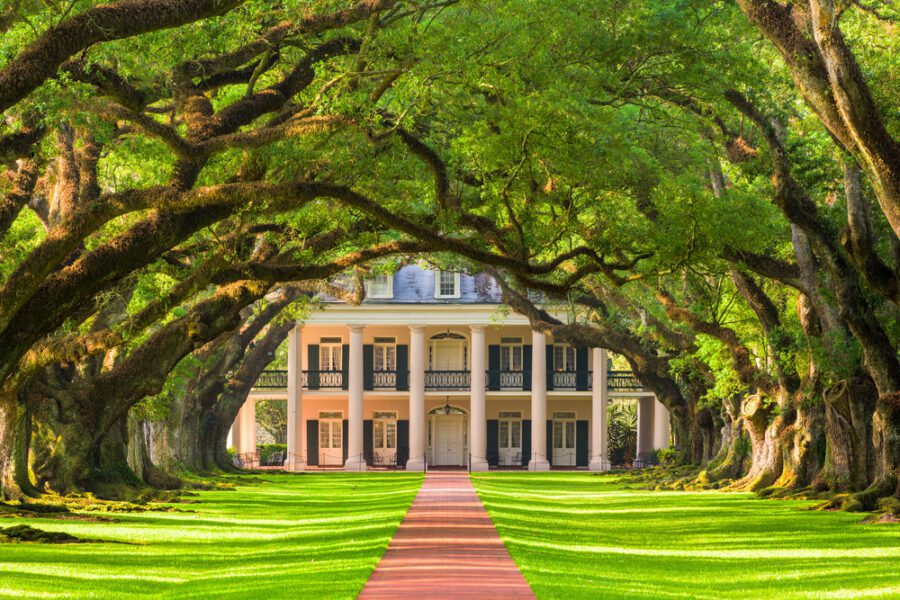
Oak Alley Plantation, Vacherie, LA
This plantation was first a sugar cane plantation started by Valcour Aime, who purchased the property in 1830. He established an enslaved community that worked the plantation. But in 1836, Jacques Roman bought the Oak Alley property and began to build his own home on the lot.
Accomplished entirely by slave labor, his house was built in Greek Revival style using bricks made on-site and marble shipped in by steamboat. The self-guided tour at Oak Alley centers on the lives and living conditions of those who were owned and kept on this plantation.
While visiting, learn about life after emancipation and stop by the Blacksmith Shop, which pays tribute to Louisiana artisans and the history of forging metalwork. This plantation can be found in the 1993 film, Interview With a Vampire and Beyoncé’s 2006 music video for Deja Vu.
Belle Meade Plantation, Belle Meade, TN
What started as a simple log cabin is now a plantation outside of Nashville that serves as an educational source. Established by John Harding in 1807, “Belle Meade” translates to mean beautiful meadow in old English and French. What started as a 250-acre property would become a 5,300-acre farm that raised thoroughbred horses.
Besides a Greek Revival Mansion, it had a train station and a rock quarry and raised five generations of owners with their enslaved workers. Today the site maintains 34 acres of the original property, including the mansion and original home. It is dedicated to the conservation of Tennessee’s Victorian architecture and equestrian history.
Visitors can enjoy a tour of the property led by trained and costumed guides, who share the mansion’s history and other historic buildings like a carriage house, horse stable, and log cabin. Free wine tasting is offered at the location’s winery after tours, and there is a gift shop and restaurant for visitors.
Shirley Plantation, Charles City, VA
This location remains a working plantation and privately-owned home to this day. This is the country’s first plantation built in 1613, only six years after English settlers founded Jamestown. The “Great House” was styled initially in Anglo-Dutch architecture through continuous efforts and additions with mixed styles, creating a charismatic aesthetic.
The Hill family has been living on the property for 11 generations, keeping the estate in beautiful, restored condition. You can learn about the amazing women who kept the farm operating during the Civil War and saved it from falling by caring for wounded Union soldiers.
Tours highlight the history of the plantation, including the role of religion in colonial America, colonial education, the history of the Hill family, and the effects of the Civil War and Civil Rights against the plantation. A new slavery exhibit has also been built in the original 18th-century outbuilding.
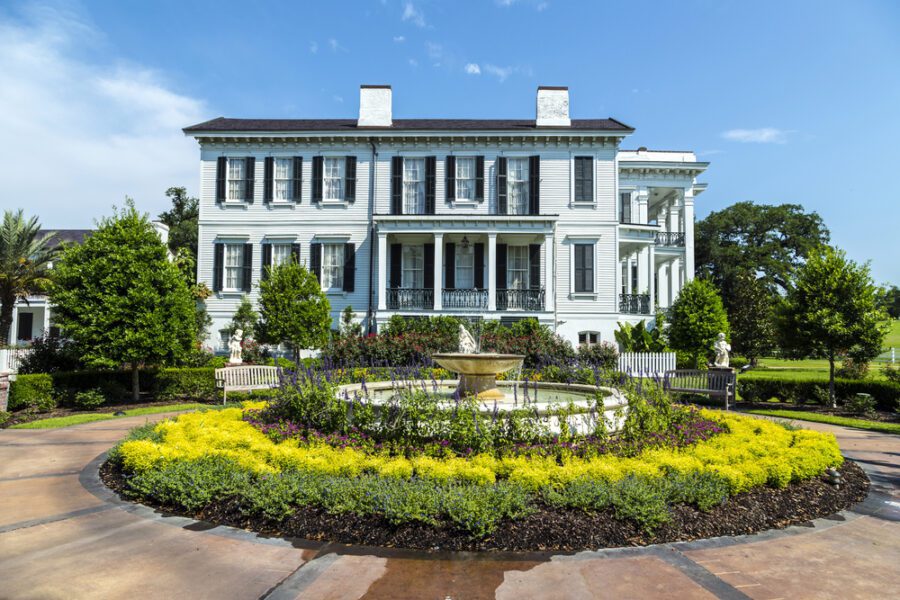
Nottoway Plantation, White Castle, LA
This is the south’s biggest antebellum mansion. Located northwest of New Orleans and southwest of Baton Rouge, Nottoway is a Greek and Italian-style mansion full of luxurious features and details. Over the years, Nottoway Plantation went through several different owners and years of decline but managed to survive the Civil War.
It was completed in 1859 by prestigious sugar planter John Hampton Randolph. As a wealthy businessman, he wanted no expense spared when it came to the home’s design. The 53,000sqft mansion has 64 rooms with 22 massive exterior columns, 12 hand-carved Italian marble fireplaces, 15ft ceilings, and a lavish pure white oval ballroom. He also installed modern bathrooms with running water and gas lighting throughout the home.
He wanted a home that would be seen by river boaters on the Mississippi River or riders on a horse-drawn carriage traveling on Great River Road. When you visit today, costumed tour guides take you through the mansion, sharing details of the property’s history.
Sherwood Forest, Charles City, VA
This location is unique because it’s the only private home to be owned by two presidents. William Henry Harrison purchased the house under the name “Walnut Grove.” After his death, his successor John Tyler purchased the plantation in 1842, renaming it Sherwood Forest to show his outlaw position in the Whig party. He lived in the house from the time he left the office until he died in 1862.
The Tyler family has continued living here since then, keeping the house in excellent condition. The property is open for tours daily between 9 am and 5 pm. Only 30 minutes from Williamsburg, Sherwood Forest is a Greek Revivalist wonder with 25 acres of gardens, woodlands, and outbuildings both original and reconstructed.
Visit the gardens once used by Civil War troops and even learn about the ghost, the “Gray Lady,” who has allegedly haunted the Gray Room for the past 200 years, rocking back and forth in her rocking chair.
Pebble Hill Plantation, Thomasville, GA
Melville Hanna, who obtained the property in 1896, gave the estate to his daughter, Kate, in 1901, and she immediately began construction on Pebble Hill, being actively involved in its design process. She first built a log cabin that served as a school and a playroom for her children.
She then continued with neo-classical brick structures like the Plantation Store, the Waldorf, the Pump House, and the Stables Complex. Kate being a humanitarian, provided many benefits to the 40 employees who worked on the plantation. The Visiting Nurse Association offered medical services for employees and their families, and two schools were built and maintained for employees’ children.
After Kate died in 1936, her daughter Elisabeth inherited the plantation and turned it into a museum. Finally, in 1956 the Pebble Hill Foundation made the property open to the public, and they maintain and manage the estate today.

Whitney Plantation, Edgard, LA
This historical complex, which includes 12 structures, was initially called the Habitation Haydel. The Spanish Creole-style main dwelling and its surrounding buildings were built by slaves under the owner, German immigrant Ambrose Heidel, in 1752.
This plantation stands as a memorial to the slaves sacrificed on the property and others like it. The Field of Angels especially is a section of the slave memorial site, dedicated to 2,200 Louisiana slave children who died before they were three. Ultimately, thirty-nine children died at Whitney between 1823-1863, only six of which made it to five years old.
Also dedicated to the slaves of Whitney, you’ll find the Slave Quarters site. You won’t find the original buildings here because the previous owners advocated for their removal in an attempt to raise property values. The ones that stand were moved from other plantations, supporting the authenticity and educational value of the site.
Andrew Jackson’s Hermitage, Hermitage, TN
The President and his wife lived here for years, living off profits made from the crops that slaves worked daily. When he initially bought The Hermitage in 1804, Jackson owned nine African American slaves, and by the time he passed away in 1845, he owned 150 slaves who lived and worked on the property.
Tours here cover over 1,000 acres of farmland that used to be The Hermitage Plantation. It was a self-sustaining property, relying on slave labor to produce cotton. Although slaves could not legally wed, Jackson encouraged them to form family units to discourage slaves from escaping since it would be more difficult for an entire family to flee safely.
Take a tour of the Hermitage and walk through the mansion and its grounds, where President Jackson and his wife are buried. Costumed tour guides share a detailed history of the Jackson family, the plantation, its buildings, and original belongings that have survived on the property.
Magnolia Plantation and Gardens, Charleston, SC
In 1676, Thomas Drayton, with his wife Ann, the first in the Magnolia family line that lasted for more than 300 years, established the Magnolia Plantation along the Ashley River. During the Colonial era, the plantation saw immense growth due to the cultivation of rice.
But once the American Revolution began, troops occupied the land, and Drayton and his sons became soldiers fighting the British. The American Civil War threatened the welfare of the Drayton family, the house, and the gardens, but the plantation recovered and saw additional growth of the gardens, which became the focus.
The property was saved from ruin by opening to the public and now offers guided tours taking visitors through the Drayton family home and gives a glimpse of what plantation life was like in the 19th century. This includes ten rooms that are open to the public, furnished with antiques, quilts, and Drayton family heirlooms.

Destrehan Plantation, Destrehan, LA
This Plantation in Louisiana was built in 1787 and is located 25 miles away from downtown New Orleans. It was home to successful sugar producers Marie Celeste Robin de Logny and Jean Noel Destrehan. By 1804, fifty-nine enslaved workers lived on the property, producing over 203,000 pounds of sugar.
This plantation is where one of the three trials after the 1811 Slave Revolt took place. Led by Charles Deslondes, it was one of the most significant slave revolts in US history. Visitors can tour the restored plantation, encircled by lush greenery, that looks over the Mississippi River.
Stories of the Destrehan family and those enslaved are shared through guided tours, which also feature historical exhibits and opportunities to participate in period demonstrations. Tours also include access to the Jefferson Room, displaying an authentic document signed by Thomas Jefferson and James Madison.
James Madison’s Montpelier, Montpelier Station, VA
Ambrose Madison, a slaveholder in Virginia, and his wife Frances and children arrived in 1732 at a plantation they named Mount Pleasant. James, the grandson of Ambrose, spent his early childhood here while construction on a brick Georgian house began that would later become the center of James Madison’s Montpelier.
This is the land where James Madison thought up ideas and shaped the US as the country’s 4th president. With 2,650 acres of rolling hills, horse pastures, and scenic views of the Blue Ridge Mountains, Montpelier offers insight into the Madison family history and provides a deeper look into Madison’s presidency. Exhibits on the grounds include the 1910 Train Depot, exploring the African American struggle for civil rights.
There’s also The Mere Distinction of Colour, allowing visitors to hear the stories of enslaved people at Montpelier, as told by their descendants. It recounts the events at Madison’s home and the South Yard of the land, where slaves lived and worked. The exhibition even explores how the legacy of slavery impacts race and human rights in modern America.
Speaking of tours in the US… There are plenty of them and we have some awesome estate tours to show!

Ricarda is our very definition of a wanderer. Hailing from Chicago, Illinois, she’s on a race to see and experience as much of the world as possible. She packed up her life one day and has been traveling by RV ever since, scouring the states to discover the many stunning views the US has to offer! Lucky for us, she’s also one of our senior writers so we get access to a lot of worth-telling insights about her amazing adventures.
Leave a Comment Cancel Reply
Your email address will not be published. Required fields are marked *
Save my name, email, and website in this browser for the next time I comment.
Follow us on:
Most popular, 11 charming small towns to retire in america 30 may 2022, 9 surprising things not allowed on a plane 11 january 2023, 8 disgusting things hotels are still doing to save money 22 june 2022, 13 remarkable train tours for railway fanatics 19 october 2021, related posts.

6 Tourist Destinations with High Hurricane Risk
Think twice before visiting these destinations in the summer. Alert: HIGH HURRICANE RISK! There are some places

7 Shocking Hotel Red Flags to Watch for Before Booking Your Stay
Poor service and shoddy establishments can turn a dream vacation into a nightmare. Beware of these hotel

5 Famous National Parks You’ve Seen on Screen
Maybe you’ve never been to these national parks, but you sure know them! There is one thing

6 US Small Towns That Make Canadians Jealous This Fall
Looking for trip destinations this fall? These small towns that make Canadians jealous are absolutely gorgeous! Leaves

Responsible Tourism: 5 Destinations to Reconsider
Top destinations to reconsider before booking! Dreaming about that perfect vacation photo? Well, this becomes harder and

Hotel Breakfast? 6 Foods to Definitely Avoid
Let’s see what the deal is with these hotel breakfast items you’re better off avoiding! One of

Donald Trump’s 10 Favorite Travel Destinations, Ranked
A high-profile businessman and former President, Donald Trump, has a strong relationship with traveling, either for business,

15 Beautiful Off-Season Towns to Visit in Winter
Are You a Winter Lover But Always Want to Avoid Crowded Places? This Article is For You
Do not sell my personal information | Privacy Policy | Terms and Conditions | Contact | Subscribe | UnSubscribe | BECOME A WANDERER | OUR NEWSLETTERS
Made with ❤ by Inedit Agency
CA Privacy Policy | Request to Know | Request to Delete
What a Southern Plantation’s Paper Trail Can Reveal about the Lasting Legacies of Slavery
Historian mary snyder (grs’29) spent her summer building the archives of the whitney plantation’s store.
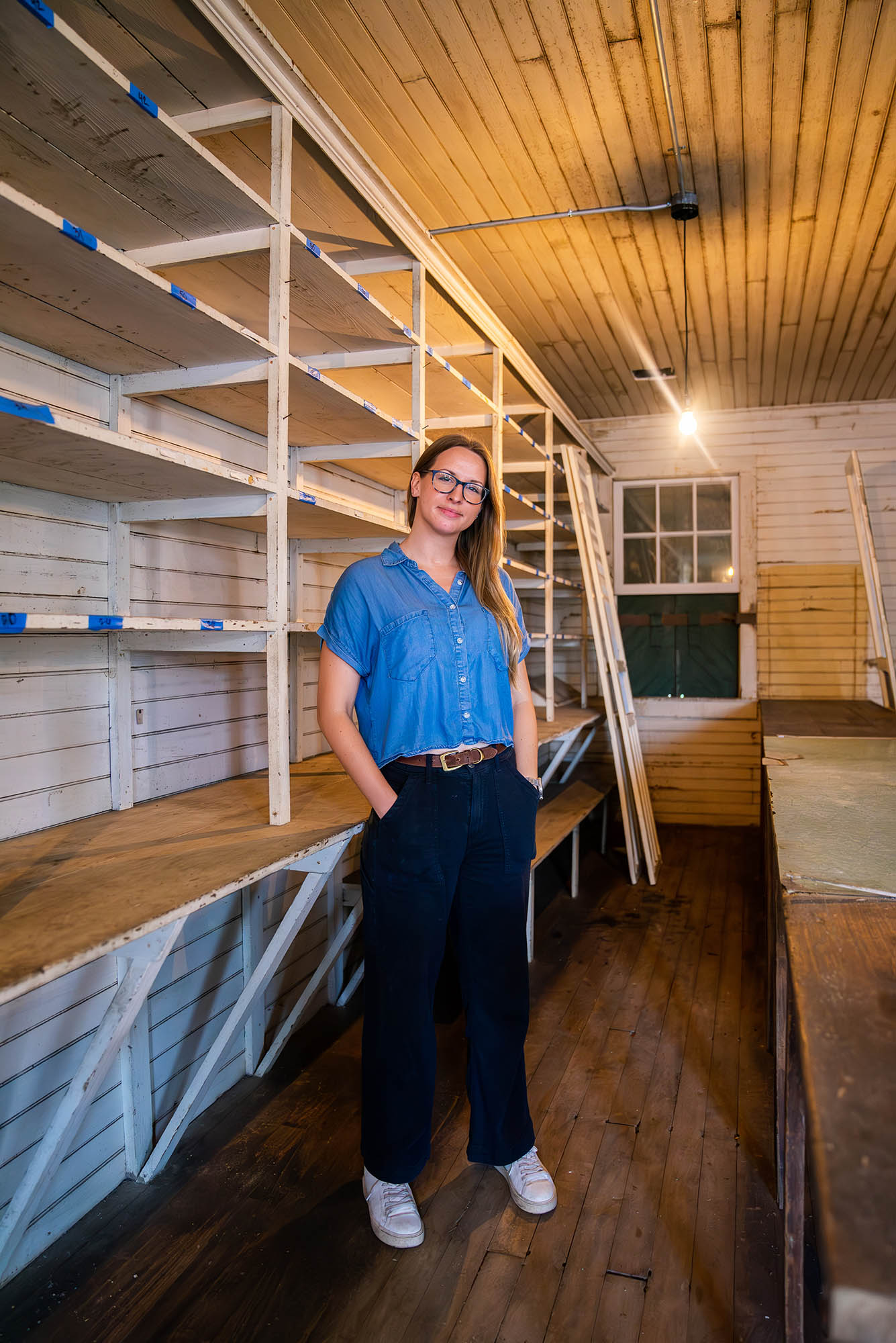
Before her summer internship at the Whitney Plantation, Mary Snyder (GRS’29) worked for the Historic Charleston Foundation and Monticello, the home of founding father Thomas Jefferson. Photo by Sydney Joelle Walker
BU historian Mary Snyder (GRS’29) spent her summer building the archives of the Whitney Plantation’s store
Amy laskowski.
Rice (30 cents), oatmeal (20 cents), and meat (50 cents) all appear on Whitney Plantation worker John Johnson’s 1953 grocery bill. He spent $14.18 on 24 items, a balance carried over when he left Whitney to start a new job at a nearby plantation. “We understand that Johnson owns a balance of about $25,” his new manager wrote to his former boss . “Will you therefore bill me for the difference as soon as possible?”.
This running total would continue to follow Johnson, indebting him to his bosses—just like thousands of other Black Americans who worked as sharecroppers on Southern plantations until the 1970s.
The bill and the letter are two of thousands of records studied by Boston University PhD student Mary Snyder , who spent her summer on the grounds of Whitney Plantation, now a historic site, on the banks of the Mississippi River in Louisiana, about an hour’s drive west of New Orleans. Snyder (GRS’29) pored over decades of handwritten receipts, tax returns, insurance claims, letters, and other documents from the Whitney Plantation’s store, which sold everything from clothing to medicine to groceries—and even handled workers’ personal affairs.
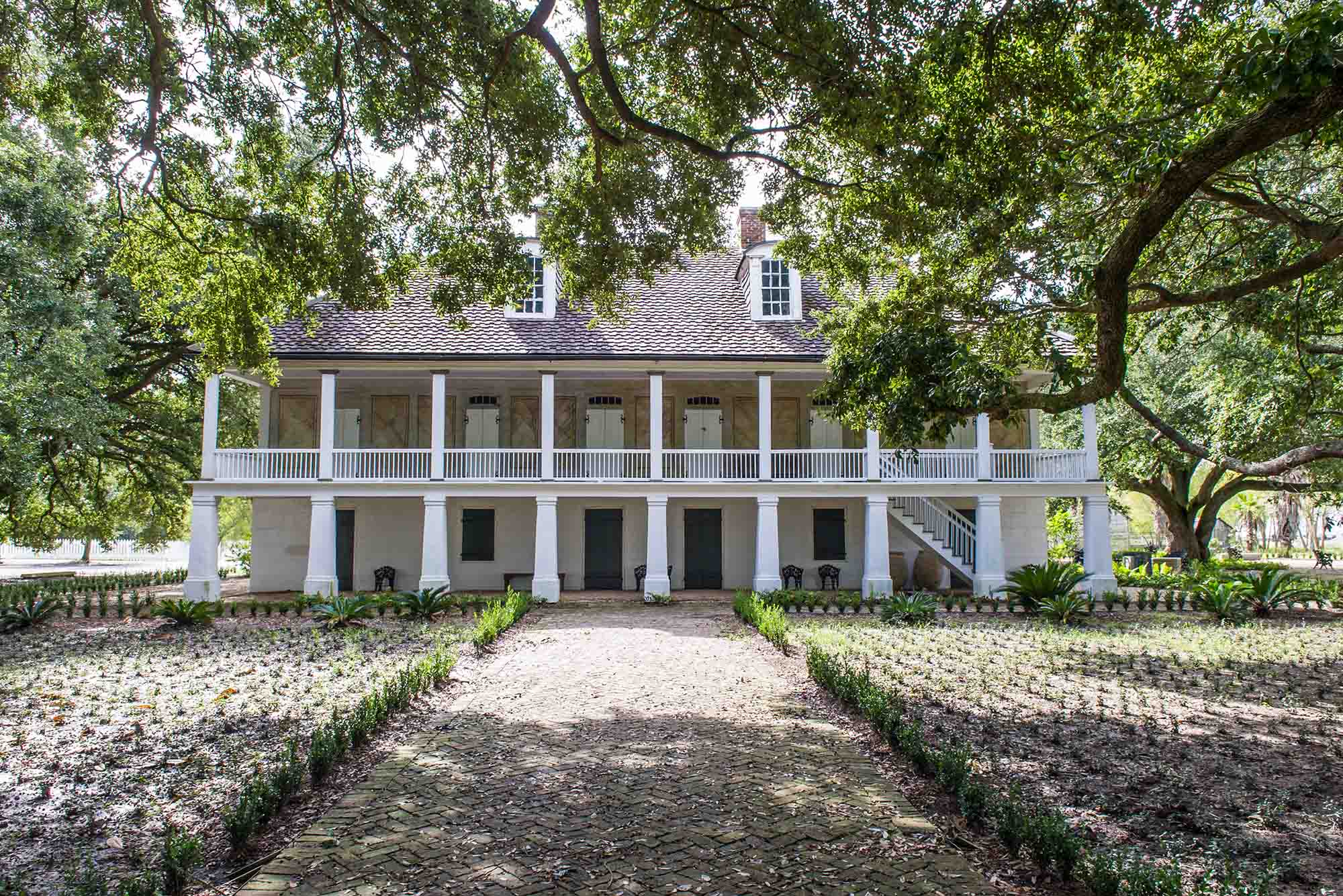
The records, Snyder says, tell an important story of the Jim Crow era. After emancipation, formerly enslaved workers often returned to plantations to work for low wages and in harsh conditions. Without money for housing or food, they had no choice. Plantation owners in turn set up stores, where the workers could buy groceries, medicine, clothing, and other items—usually at inflated prices and on a credit system. Anything the workers purchased from the store was subtracted from their paychecks at the end of the week. All of this prevented them from getting out of debt and moving off the plantation.
“Little has been written on wage-fixing in sugar plantations during this time frame,” says Snyder, a student in American and New England studies. “Many plantations don’t do an in-depth study of what happens to the site after Reconstruction.”
When Snyder took on the project, she wondered what records, like tax returns from the 1950s, could add to understanding the history of these grounds. Building on a decade of research performed by Whitney’s executive director, Ashley Rogers, Snyder’s 12-week internship involved cataloging 52 boxes of documents that, in the future, will be digitized and available to researchers.
“The collection provides an understanding of the legacies of slavery in that transformation: postbellum into Jim Crow into the civil rights era,” Snyder says. “We have a tendency to jump from the period of enslavement right into the present day, or we’ll talk about Jim Crow, but we don’t see how nuanced the mechanisms are that stay in place even after emancipation.”
A Different Kind of Plantation Tour
Other plantations in the South host weddings and offer tours of the “big house” by costumed guides, complete with mint juleps on the porch and nary a mention of the brutality that earned the owners their fortunes.
The Whitney is strikingly different, asking visitors to confront the country’s deep-seated effects of racism. It is considered the first and still one of the only museums in the country to focus on slavery. Mitch Landrieu, the former mayor of New Orleans and a top advisor to President Biden, once compared the site’s significance to Auschwitz.
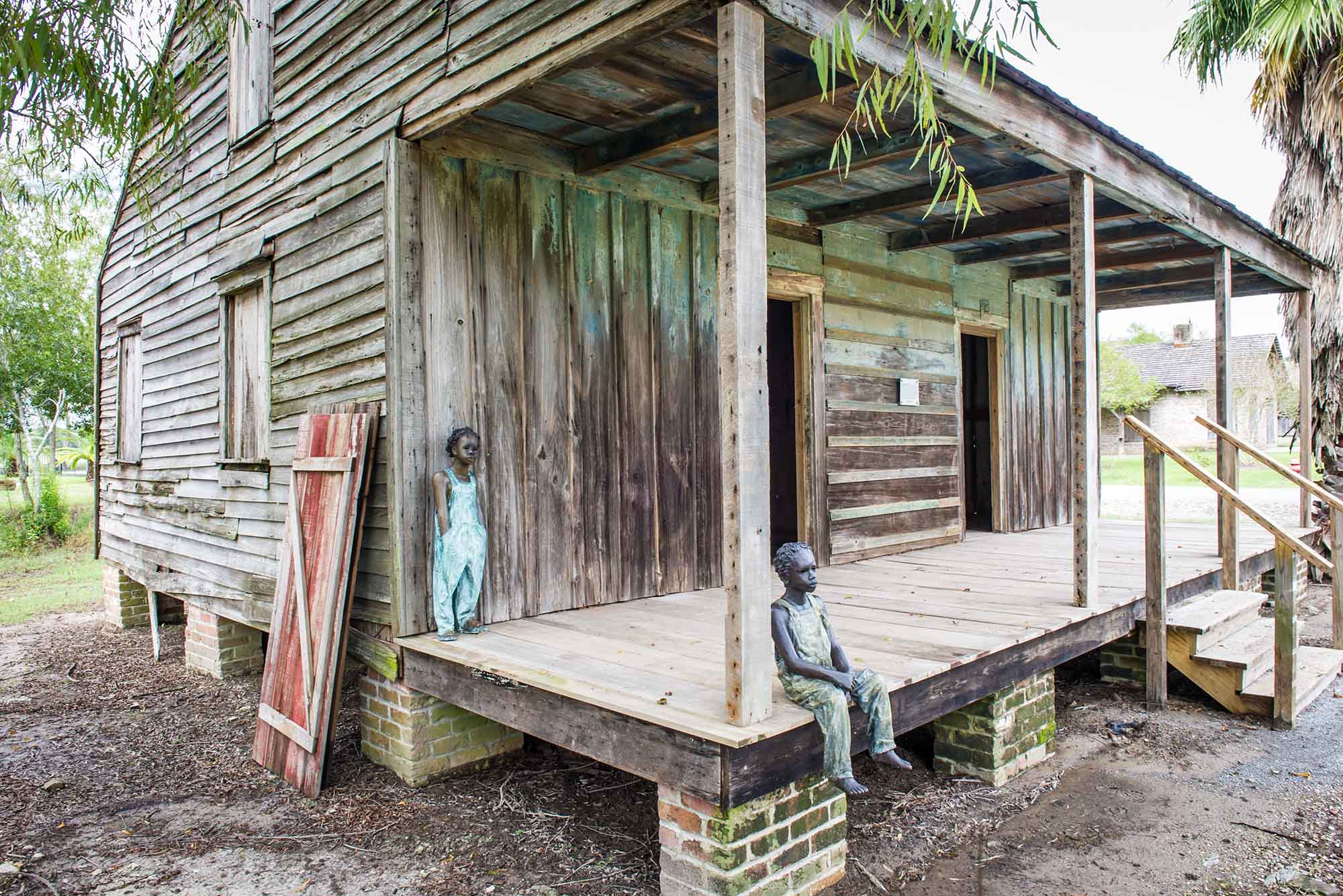
The plantation was started in 1752 by the Haydel family and expanded over the years, growing indigo plants, rice, and, most important, sugar. Sugar was a brutal crop that required constant, hazardous labor, and “for many enslaved people, being sold south to Louisiana was considered a death sentence,” reads the history section on the Whitney’s website. At its peak, the grounds were run by more than 350 enslaved people who produced more than 400,000 pounds of sugar every year. They also tended to the owner’s family, who lived in the Creole-style “big house” mansion, which is flanked by an allée of Spanish moss oaks.
After the Civil War ended, the house fell into disrepair, and its future was uncertain. In 1999, a wealthy local trial lawyer bought the Whitney land . After learning the site’s history and seeing documents that included the names of enslaved people, he felt compelled to invest $8 million of his own money to restore the property and develop it into a museum. He collaborated with artists, historians, preservationists, and researchers in the lead-up to the site’s 2014 opening.
Today, when visitors arrive at the Whitney, they receive a card with the name and story of a formerly enslaved person who’d been interviewed by the Federal Writers’ Project in the 1930s. Eerily placed around the site’s chapel are 40 life-size casts of slave children who lived—and, in many cases, died—on the plantation. The grounds also include seven slave cabins, and just outside their doors are massive iron kettles that enslaved people used to boil sugar cane.
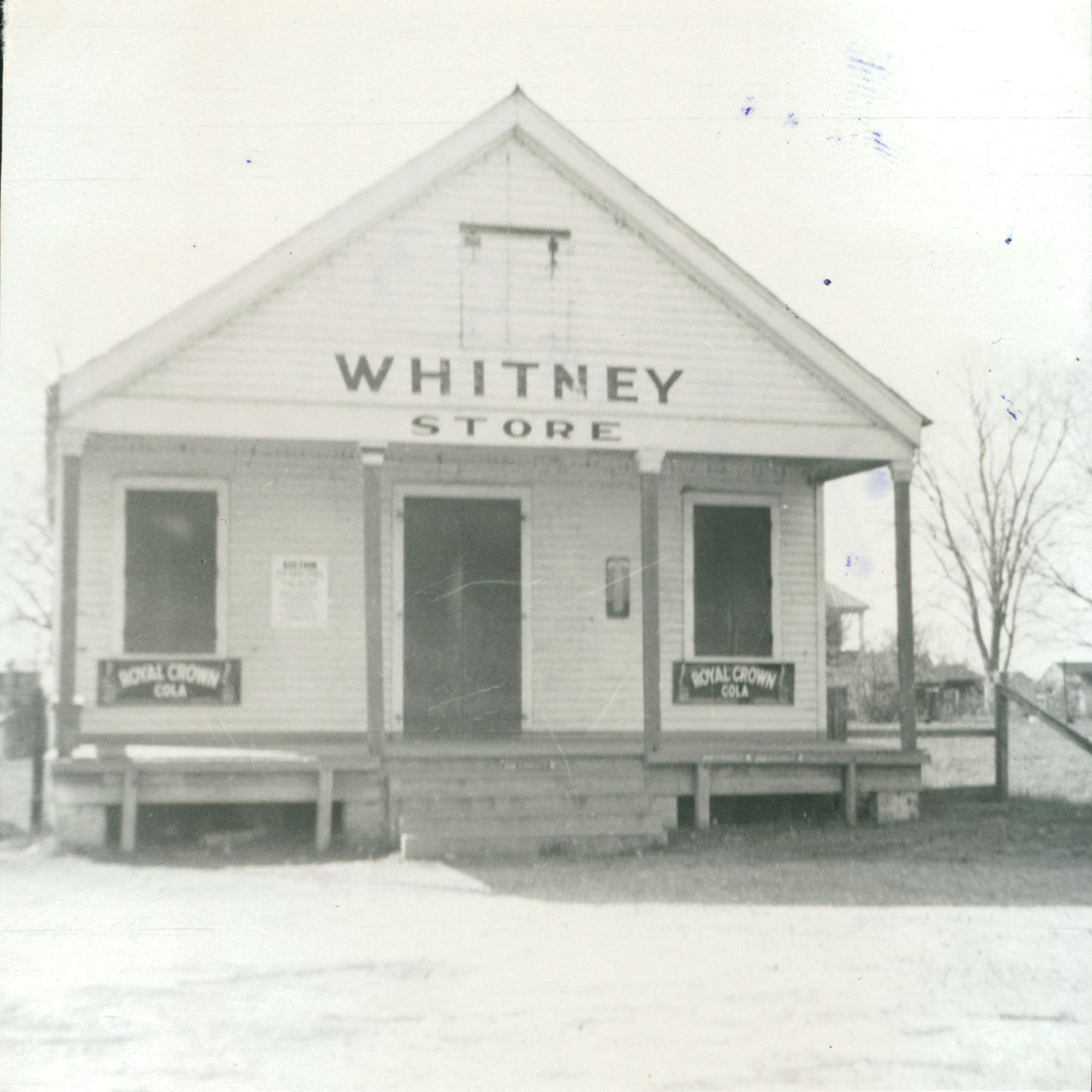
Although Snyder has spent years studying historic preservation and interpretation of 19th-century US historical sites tied to the history of enslavement, she was surprised and affected by her first visit to the Whitney.
“The mission of the site is to provide a history of slavery, and so when you go around the grounds and through the buildings, it feels like you are genuinely following these enslaved men, women, and families’ life journeys,” she says. “Unlike many other sites, there is little attention given to the enslavers.”
This spring, Snyder, who has a master’s degree in library and information science from Wayne State University, was looking for an internship and contacted executive director Rogers, who enthusiastically hired her to help finish their store’s archives project.
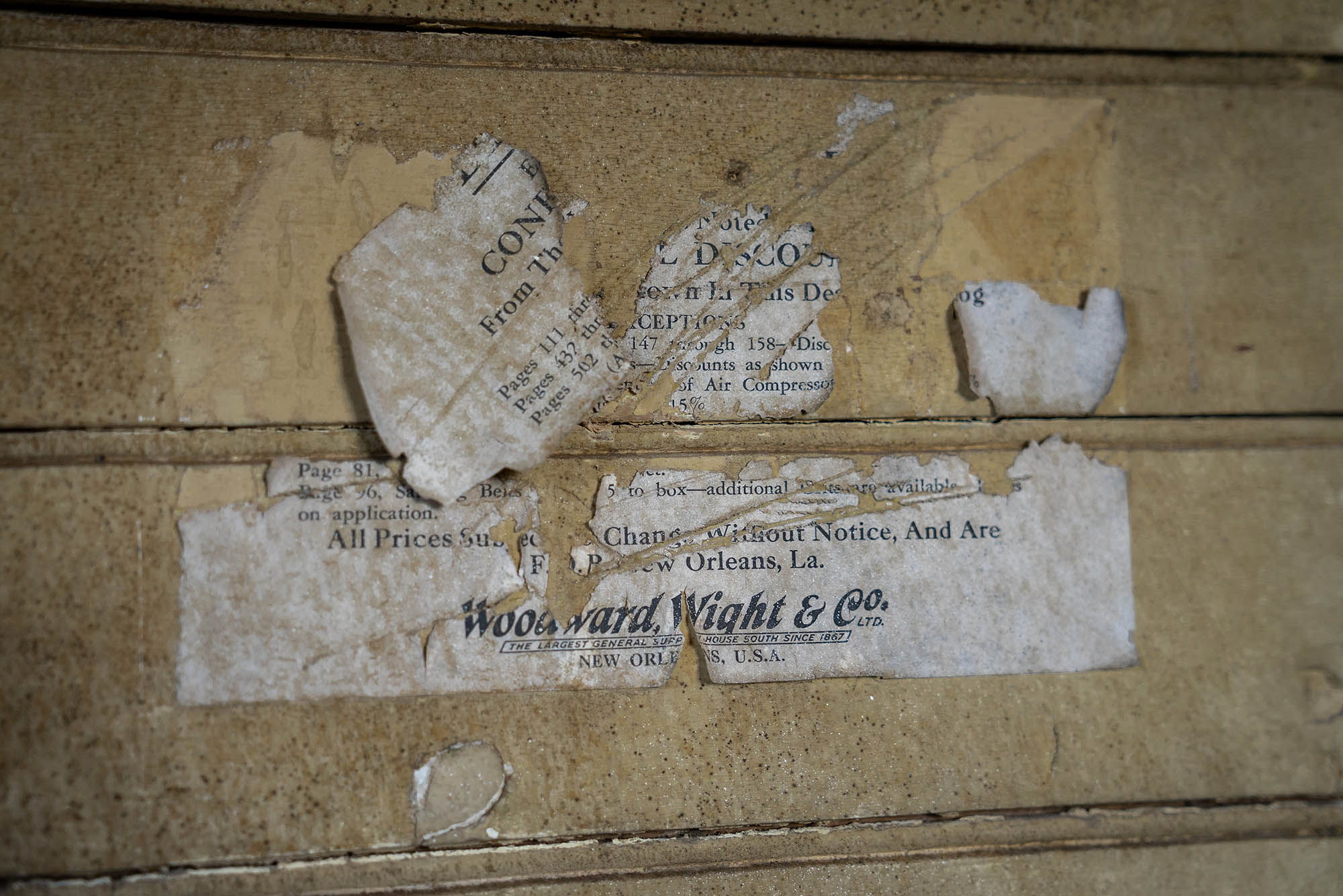
Before the Whitney opened to the public, Rogers had found previously untouched boxes of records in the plantation store. Much of the contents had been damaged and were covered in dirt and dust, but she salvaged hundreds of records spanning 1939 to 1975. In 2015, Rogers began working on this archival research project with help from previous interns and the Historic New Orleans Collection. In 2022, the Whitney received $85,000 from the African American Cultural Heritage Action Fund, a program of the National Trust for Historic Preservation, to aid in the project.
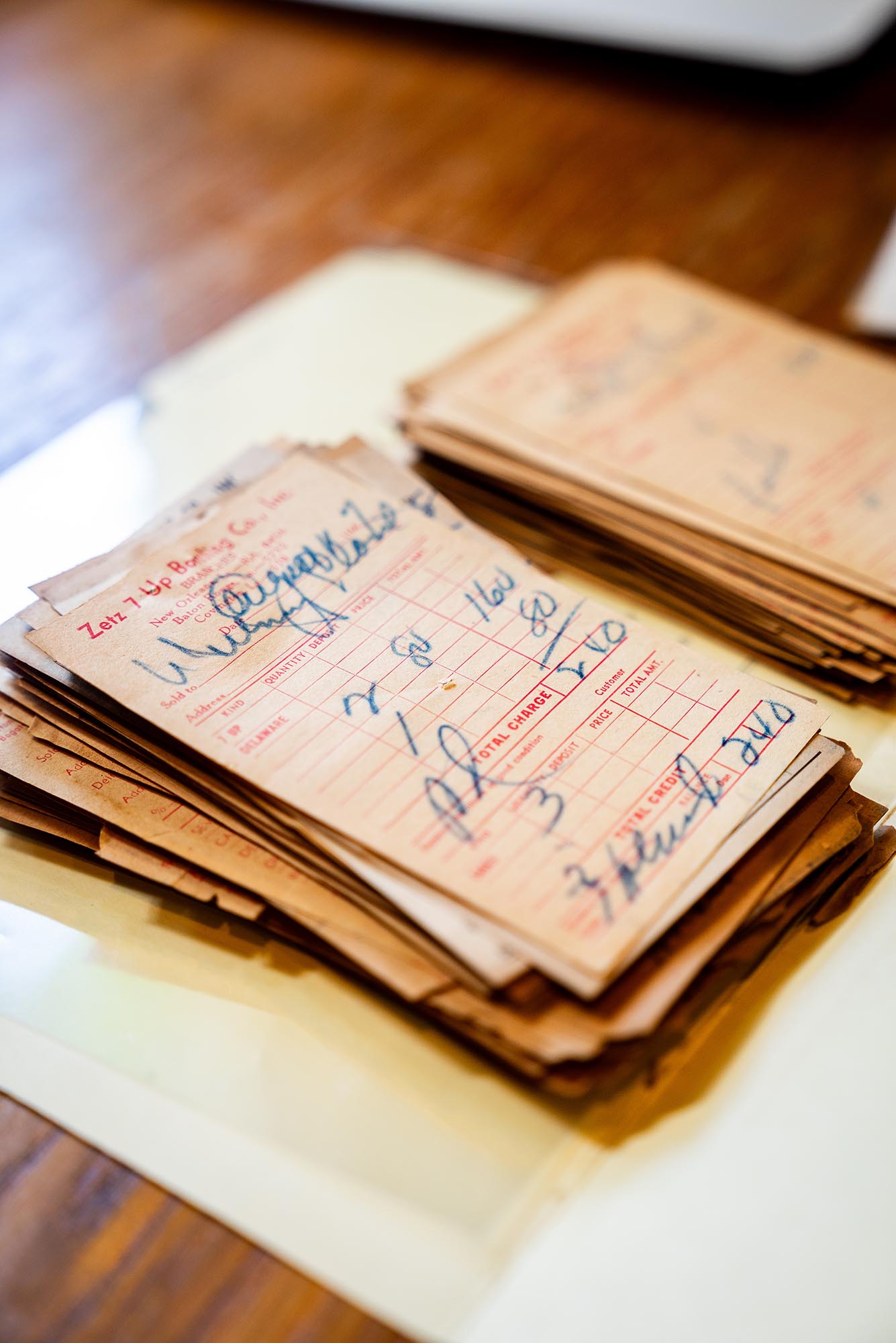
“Everything had already been sorted into major themes, but there was no structure within those themes,” Rogers says. “Mary’s work this summer has helped to cap off a decade-long project. These records tell the story of the plantation in the 20th century, and they will be invaluable to Whitney Plantation as well as future researchers.”
Snyder created a cataloging system within the existing overarching structure. She reorganized and meticulously ordered the records, which had been stacked in boxes or housed in sheets of transparent Mylar. Most important, she inventoried each box and created a metadata system (a structured index), which will be especially helpful to future researchers. Her work is also helping inform the ongoing physical restoration and interpretation of the plantation store, which will one day be open to visitors.
Snyder says those brittle invoices, payroll records, medical bills, and letters revealed a few themes. “They paint a really paternalistic picture of how, while these workers were no longer enslaved, the plantation owners maintained control over their lives through wage-fixing and other means,” she says. “They created a system in which anything that the employee or the laborer needed, the plantation store would source those things, and then determine how much to deduct from their paycheck. A lot of times the laborers didn’t even have cash in hand. And that was to restrict their economic mobility. So my work traced that.”
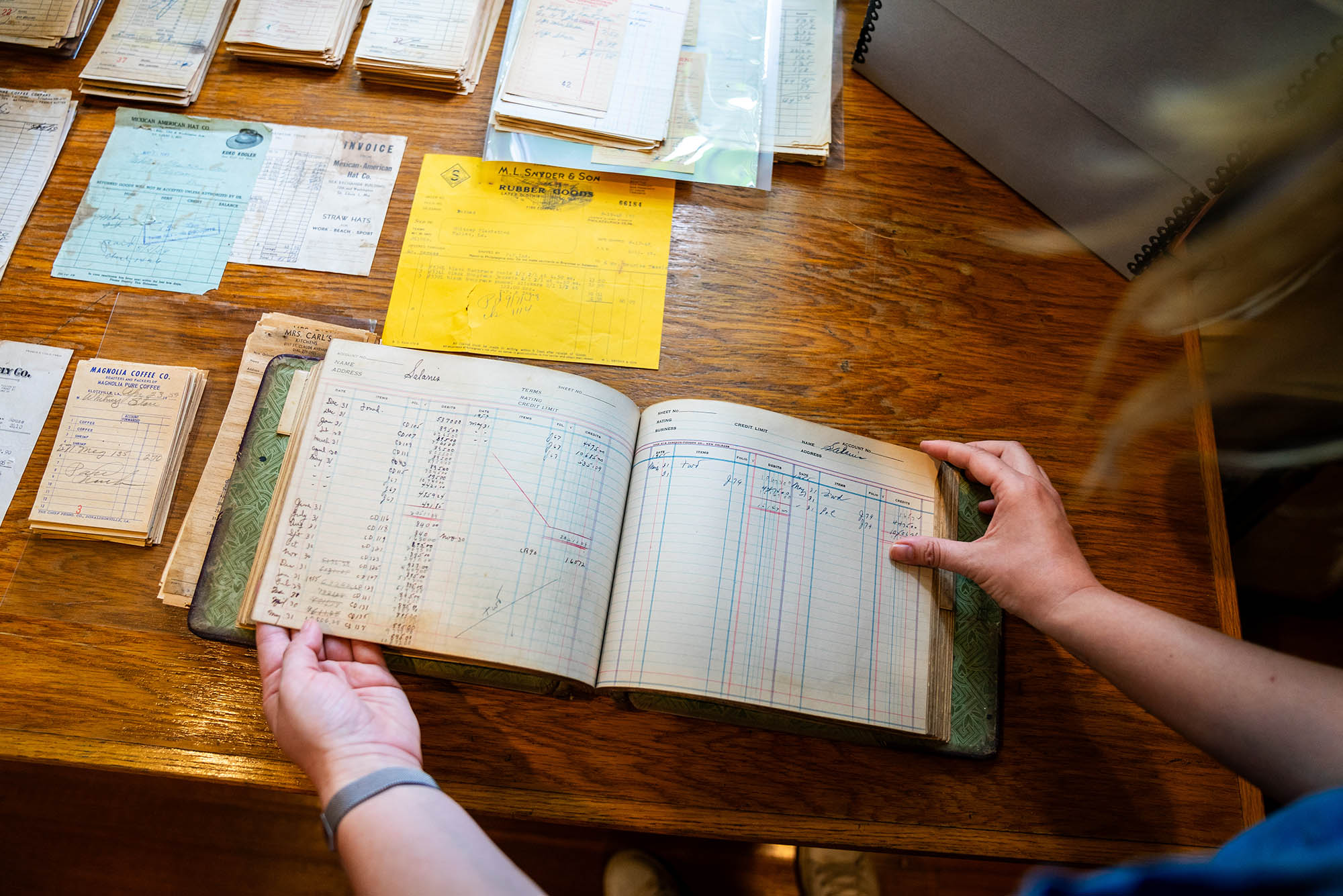
Many of the store records had been damaged and were covered in dirt and dust, but hundreds were salvaged—and can now be studied. Photos by Sydney Joelle Walker
Rogers says she is unaware of any other Southern plantation doing similar work with their store records, though she has seen some plantation store records in university archives. “On the whole, I think this is a very under-researched area,” she says. “I think that because plantations are so focused on the antebellum era, they may not see the value in preserving these 20th-century records.” She hopes that the analysis of how plantations operated in the 20th century will soon catch up to what we know about their Civil War-era histories.
Snyder says she was honored to work on the Whitney Plantation and chip away at this project. “It is a museum that really does fulfill its mission: it is dedicated to pushing forth a more inclusive narrative,” she says. “It was also eye-opening for me, as someone who usually is in the 19th-century space, to recognize how little we fully understand what happened in 20th century daily life…. Preserving and interpreting records and buildings from this period will help us all better understand how the legacy of slavery truly permeates through to today.”
A Prominent BU Alum’s Descendants Were Enslaved on the Whitney Plantation
Sybil Haydel Morial (Wheelock’52,’55) was a retired educator and longtime community and civil rights activist in her home city of New Orleans. She died at age 91 on September 4.
In her memoir, Witness to Change: From Jim Crow to Political Empowerment (John F. Blair, 2015), Morial recounts the story of her great-great-grandmother Anna, who was purchased from an auction house by the Whitney Plantation’s original owners, Marcelin and Azelie Haydel. As was the case with many enslaved women, Anna was assaulted by one of the Haydel men, and her son was, therefore, also enslaved.
Eventually, Morial’s family fought their way off the plantation. In her book, she describes how she grew up in New Orleans’ Seventh Ward in a bungalow built “by a freeborn man of color.” Her father was a respected Creole surgeon. Morial attended Xavier College for two years before transferring to BU, where she met Martin Luther King, Jr. (GRS’55, Hon. 59) and went on to earn a master’s in education. Her husband, Ernest “Dutch” Morial, was the first Black mayor of New Orleans. They raised five children.
In addition to her long career in education, Morial organized the Louisiana League of Good Government, which has a mission to increase Black voter registration and turnout, and mentored women to become leaders.
Explore Related Topics:
- Share this story
- 0 Comments Add
Senior Writer Twitter Profile

Amy Laskowski is a senior writer at Boston University. She is always hunting for interesting, quirky stories around BU and helps manage and edit the work of BU Today ’s interns. She did her undergrad at Syracuse University and earned a master’s in journalism at the College of Communication in 2015. Profile
Comments & Discussion
Boston University moderates comments to facilitate an informed, substantive, civil conversation. Abusive, profane, self-promotional, misleading, incoherent or off-topic comments will be rejected. Moderators are staffed during regular business hours (EST) and can only accept comments written in English. Statistics or facts must include a citation or a link to the citation.
Post a comment. Cancel reply
Your email address will not be published. Required fields are marked *
Latest from The Brink
Why are kids struggling with anxiety more than ever, getting their hands dirty in the lab—and in the charles river, 2024 ignition awards aim to bring bu science and tech to market, bu team wins major national science foundation grant to help phd students attack climate change, liberation through rhythm: bu ethnomusicologist studies history and present of african beats, oxygen produced in the deep sea raises questions about extraterrestrial life, the histories of enslaved people were written by slavers. a bu researcher is working to change that, making mri more globally accessible: how metamaterials offer affordable, high-impact solutions, “i love this work, but it’s killing me”: the unique toll of being a spiritual leader today, feeling the heat researchers say heat waves will put more older adults in danger, what the history of boston’s harbor can teach us about its uncertain future, eng’s mark grinstaff one of six researchers to receive nsf trailblazer engineering impact awards, how do we solve america’s affordable housing crisis bu research helps inspire a federal bill that suggests answers, missile defense won’t save us from growing nuclear arsenals, this ai software can make diagnosing dementia easier and faster for doctors, suicide now the primary cause of death among active duty us soldiers, state laws banning abortion linked to increases in mental health issues, scuba diving safely for marine biology research, heat waves are scorching boston, but are some neighborhoods hotter than others.

IMAGES
VIDEO
COMMENTS
from. $189.00. Oak Alley Plantation and Swamp Boat Tour from New Orleans. 306. Soak up the atmosphere of the bayou on this 8-hour cultural tour from New Orleans. Visit the Oak Alley Plantation House, dating from 1837, and view the stately row of 28 evenly spaced mature oaks that line the driveway. Follow your guide, dressed in period costume ...
Laurel Valley is the largest surviving 19th and 20th century sugar plantation and features miles of sugarcane fields, the original slave cabins, schoolhouse and church. Visit the general store and view antique tools used for harvesting sugar cane.
"Authentic" best describes St. Joseph & Felicity, 2 working Sugarcane Plantations located in Vacherie, LA. Our family invites you in for a relaxed, intimate visit to tour our ancestral homes, grounds, dependencies and the dwellings of the enslaved. Experience rich history & many exhibits sure to give you a glimpse into life on a sugar ...
Visit a real Louisiana sugar plantation that's off the radar of most New Orleans visitors. St. Joseph's Plantation was sold after the Civil War and has remained in the same family ever since. It's now used as a living museum, and has been featured in many TV shows and films. Explore the well-preserved main house on a guided tour, and learn about the free and enslaved people who have lived ...
Laurel Valley Plantation
The plantation is open for tours Labor Day Weekend and Labor Day, Monday, September 2, 2024 from 9:00 am to 4:00 pm. First tour of the day begins at 9:30 am and the last tour of the day begins at 4:00 pm. read more » Choose from one of our exclusive tours to experience the best of Destrehan plantation: Plantation Tours; Combo Tours
Call 225-265-4078 for more information. "Authentic" best describes St. Joseph & Felicity, working Sugarcane Plantations located in Vacherie, LA. The family invites you in for a relaxed, intimate visit to tour their ancestral homes, grounds, dependencies and the dwellings of the enslaved. Experience rich history & many exhibits sure to give ...
The Whitney Plantation stands out by honoring the slaves who built it. Visitors can tour "The Big House," Slave Quarters, Wall of Honor memorial, Antioch Baptist Church, and other exhibits. Established in the early 1700s by a German immigrant, the plantation thrived due to slave labor, producing over 400,000 pounds of sugar at its peak.
Discover a site of historical and cultural significance during a tour of the St. Joseph Plantation tour. Follow your guide as you explore the expansive grounds and learn of the place's long history. Visit one of the few fully intact working sugar cane plantations in the River Parishes. Understand the site's historical significance as you ...
Guided tour Louisiana: Laura, Oak Alley, or Whitney Plantation Tours. Activity provider:N'awlins Luxury Tours. 4.5 / 5 45 reviews Likely to sell out. ... Experience the world of an 1830's sugar plantation through the eyes of the enslaved people who lived and worked here. Enjoy a 90-minute walking tour and gain a unique perspective on the ...
Located between Baton Rouge and New Orleans, Louisiana, The Houmas House Estate allows visitors to experience the life of wealthy plantation owners in the 1800's. The mansion has been restored to the antebellum era, reflecting the opulence and wealth this sugarcane farm boasted in the 1880's. The guided mansion tour walks through the 250 ...
Houmas House Estate and Gardens is a Greek Revival home that, at its peak in the 1860s, was the largest sugar producer in the United States. Today, you can tour the home and its gardens, visit The Great River Road Museum onsite, and dine at one of their restaurants. Laura Plantation. Whitney Plantation. St. Joseph Plantation.
Houmas House Plantation offers several options for tours. The guided mansion tour is 60 minutes and offered daily from 9:30 am - 7:00 pm providing visitors the chance to understand daily life on this Sugarcane Plantation. Using artifacts, antique furniture and original artwork, a guide in period dress leads guests from room to room telling stories of past owners and their legacy, the mansion ...
St. Joseph Plantation is a family owned, working sugarcane plantation. Built circa 1830, St. Joseph has been family owned since 1877 when purchased by Joseph Waguespack. 135 years later, St. Joe continues to operate as a working sugar cane planation. When touring, you may be pleasantly surprised to learn that your tour guide is a direct ...
The Sugar Plantation
Oak Alley Plantation. A visit to Oak Alley plantation is a immersive journey into antebellum South. This iconic estate shares its evolution overtime, from a mere land grant on a map to its time as a working sugarcane plantation and to the creation of the nonprofit that owns and operates site. Visitors are invited to explore all facets of this ...
Use the Visitor Map for a self-guided tour of the rest of the exhibits at Oak Alley, which include a sugar kettles, a slave marker, the old plantation bell, the Roman family tombstone, small gardens, a view of the Overseer's House (private property), a sugarcane video, a Civil War exhibit, a blacksmith shop that includes a 1890's era forge ...
Felicite Emma. Felicity Plantation is a historic sugarcane plantation on the banks of the Mississippi River in the U.S. state of Louisiana. It is located along Louisiana Highway 18 in Vacherie, St. James Parish. Felicity is a sister plantation to St. Joseph Plantation and was built around 1846 (or 1850) by Valcour Aime as a wedding gift to his ...
Felicity Plantation. Felicity Plantation is a historic sugarcane plantation on the banks of the Mississippi River in the U.S. state of Louisiana. It is located along Louisiana Highway 18 in Vacherie, St. James Parish. Felicity is a sister plantation to St. Joseph Plantation and was built around 1846 (or 1850) by Valcour Aime as a wedding gift ...
The interesting thing about the antebellum houses situated along Louisiana's River Road from Baton Rouge to New Orleans is each is architecturally different and has a unique story to tell. Take St. Joseph Plantation. Located at 3635 Highway 18 in Vacherie, next to Oak Alley, it was built around 1830 with dowry money from Gabriel Valcour Aime ...
Whitney Plantation (legal name The Whitney Institute) is a non-profit museum dedicated to the history of the Whitney Plantation, which operated from 1752-1975 and produced indigo, sugar, and rice as its principal cash crops. The museum preserves over a dozen historical structures, many of which are listed on the National Register of Historic ...
Laura Plantation. The Laura Plantation is one of the best plantations to visit. It's a restored Louisiana Creole plantation that is open for day tours from New Orleans. At its largest, its grounds covered 12,000 acres and produced rice, pecans, sugar cane, and indigo. Though it was originally called l'habitation Duparc, after the family ...
The cultivation of sugar cane, in particular, became the backbone of Louisiana's economy, with plantations like the Magnolia Plantation leading in production. The fertile alluvial soil and the warm, moist climate provided the perfect conditions for sugar cane growth, necessitating a significant labor force to manage the cultivation and ...
Destrehan Plantation, Destrehan, LA. This Plantation in Louisiana was built in 1787 and is located 25 miles away from downtown New Orleans. It was home to successful sugar producers Marie Celeste Robin de Logny and Jean Noel Destrehan. By 1804, fifty-nine enslaved workers lived on the property, producing over 203,000 pounds of sugar.
Mary Snyder studied the 20th-century archives of Louisiana's Whitney Plantation and the lives of its workers, who, while free, were still tied to the land. ... "Little has been written on wage-fixing in sugar plantations during this time frame," says Snyder, a student in American and New England studies. ... A Different Kind of Plantation ...